Georgia keeps giving
Every day in Georgia has been great fun, seeing fascinating new places, interacting with the locals, having great travel experiences. It’s not all about 11th century monasteries, although sometimes it feels that way, and whether it is the mountains, rivers, vast rural scenes or quaint forgotten villages you can always find something amazing.
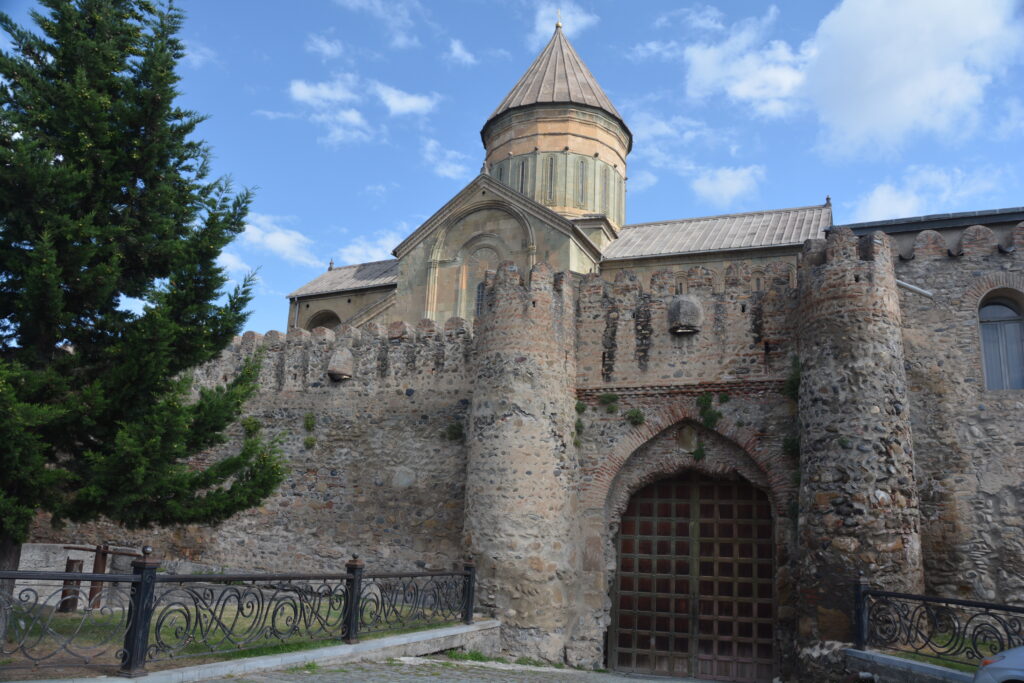
Take for instance, the 11th century church in the tongue-twisting town of Mtskheta – which is pronounced nothing like it’s spelled – which is called…wait for it…the Svetitskhoveli Cathedral. This imposing cathedral, regarded as the spiritual home for Georgians due to it’s history, longevity and celebration of the Twelve Apostles, is absolutely beautiful inside and out. We wrapped our legs with the mandatory wrap-around skirts in a basket outside the church, as we’ve had to do at almost every church or monastery, and went inside to gawk at the size and the artwork inside. Great stuff.
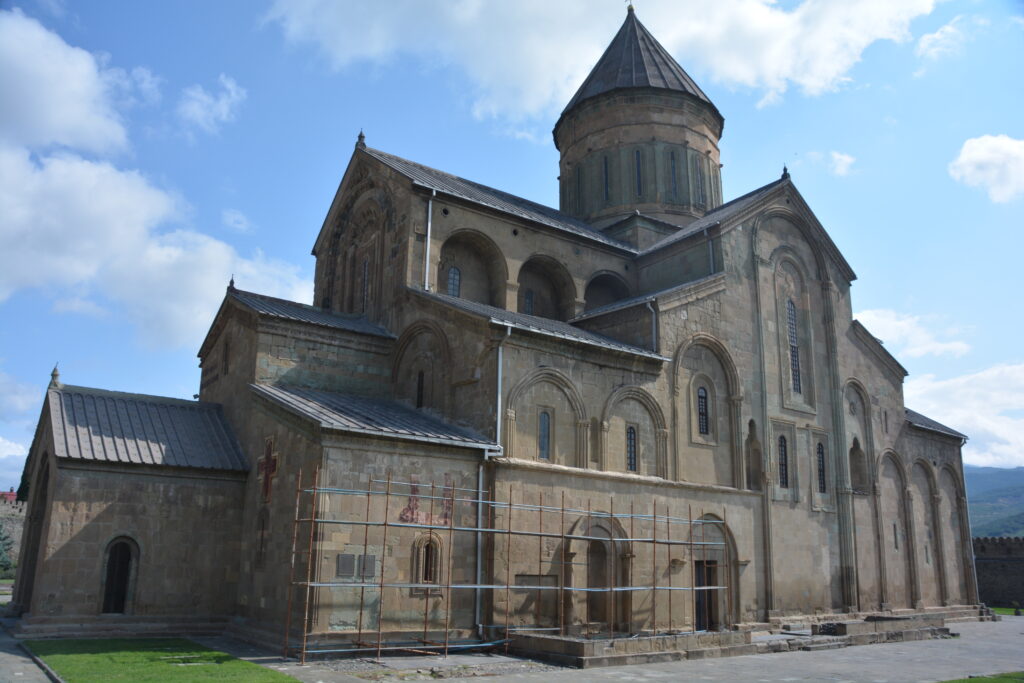
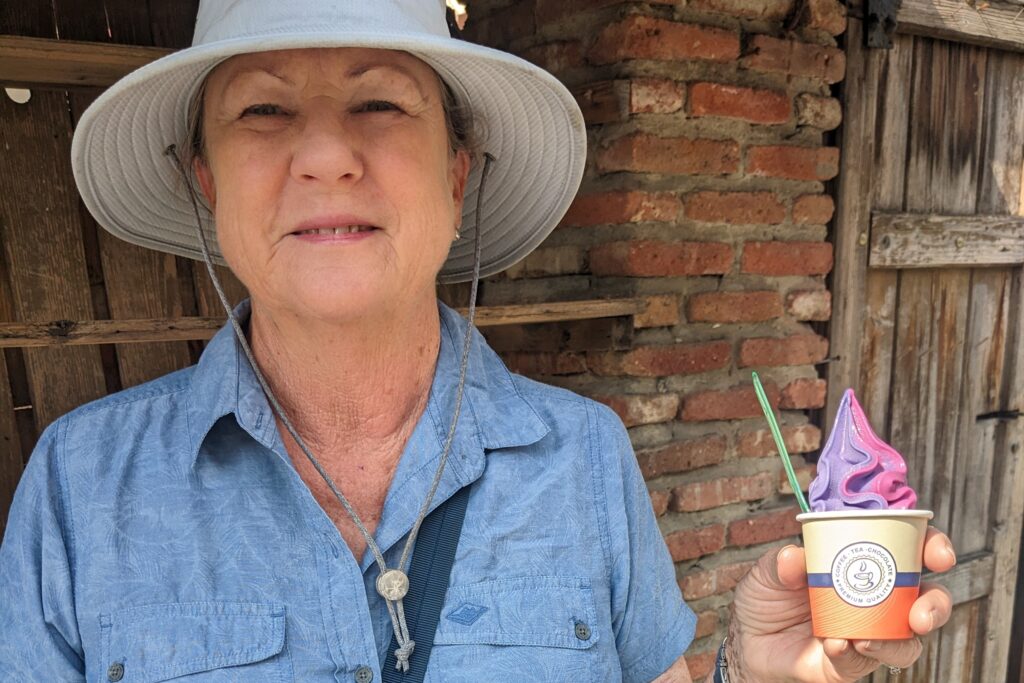
We had a lengthy shopping spree at a massive Carrefour, which had Julie smiling from ear to ear and filled our pantry. Interestingly, goods in the supermarkets come from all over the world and labeling can be in Georgian, Russian, German or anything else. Julie was seen a couple of time breaking the boycott on buying Russian goods…she said she had no choice. And my Google Translate is an invaluable tool to make sure we buy dishwashing liquid instead of toilet cleanser.
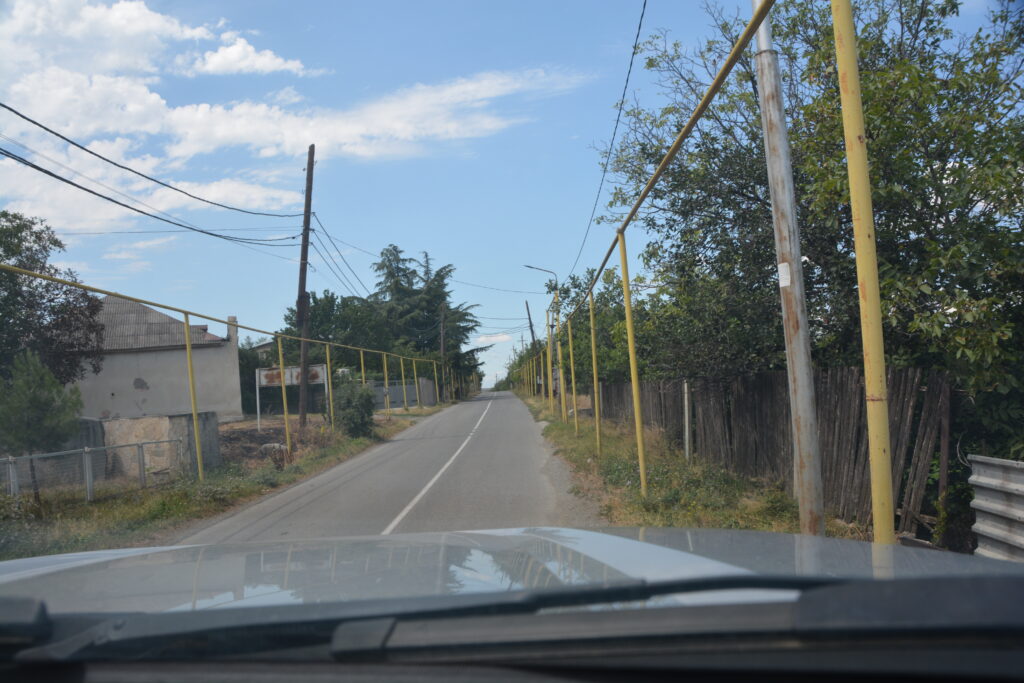
Fully stocked, we headed to another easy to pronounce place, Uplistsikhe, and stepped back 3,000 years to where up to 10,000 people carved their homes, churches, theatres, a throne room and much more into this soft sandstone mountain.
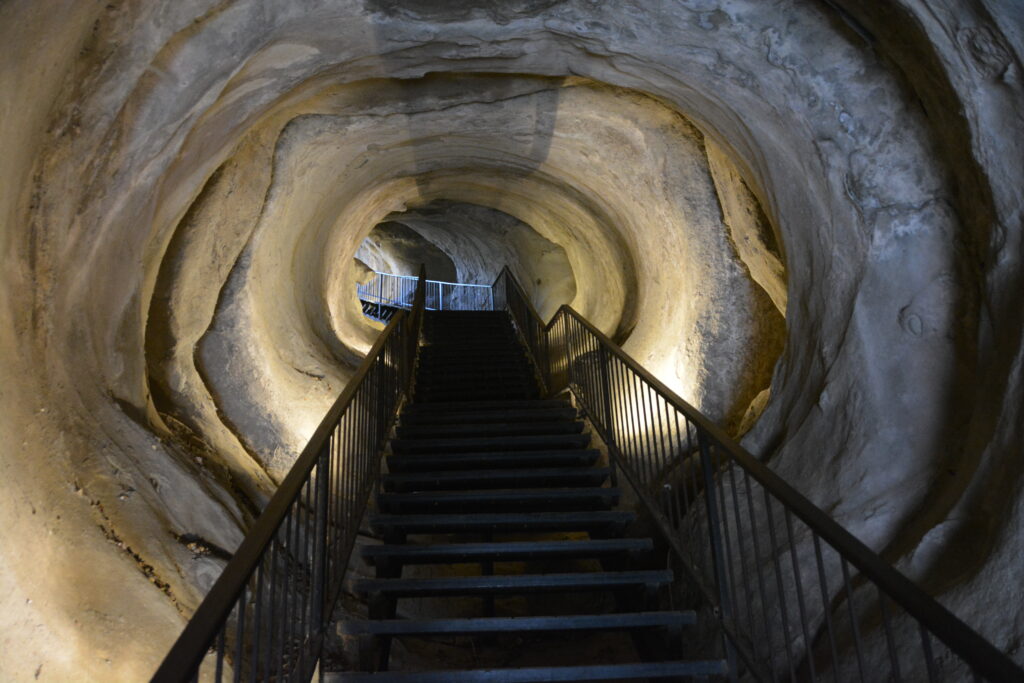
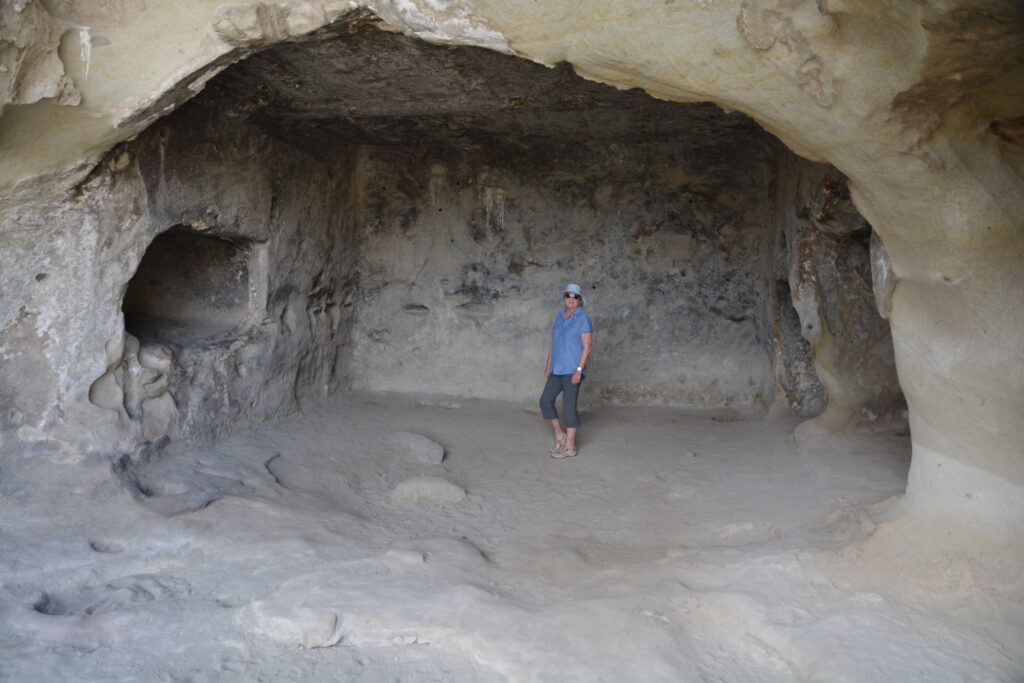
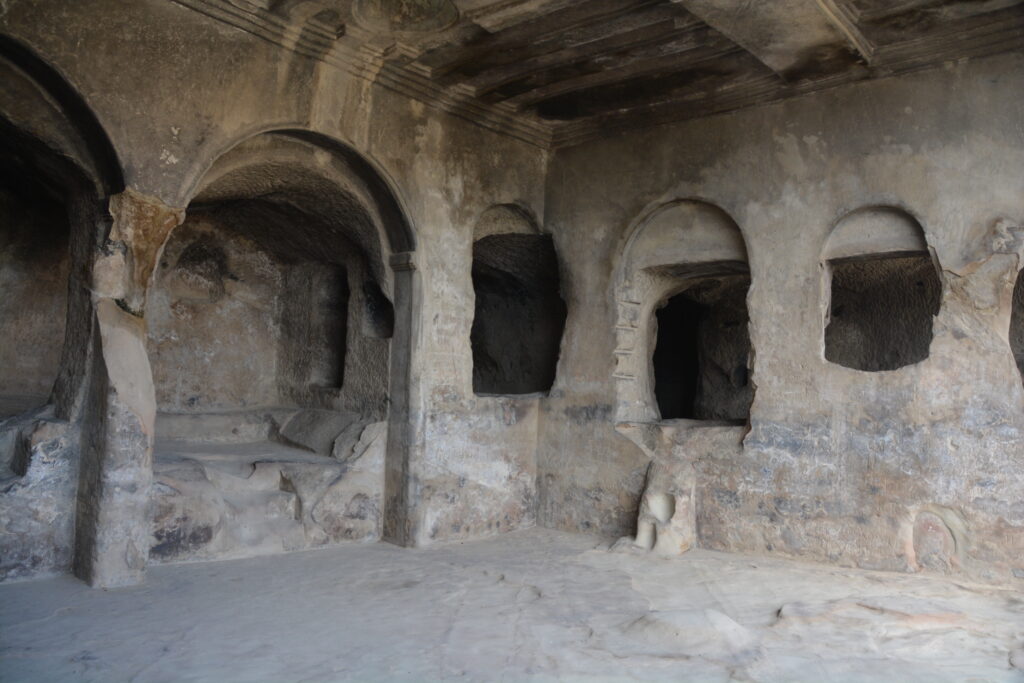
But unlike Vardzia, which we visited on our first day in Georgia a couple of weeks ago and is basically a town carved into a rock cliff face, Uplistsikhe is spread out over varying terrains of sandstone and has a main street, a number of churches and other essential features of any community, including many structures that were built on top of the rock but are now gone. Despite the blistering heat we climbed around these ruins for ages, just trying to imagine how they could have flourished under these conditions so long ago. Aren’t people amazing?
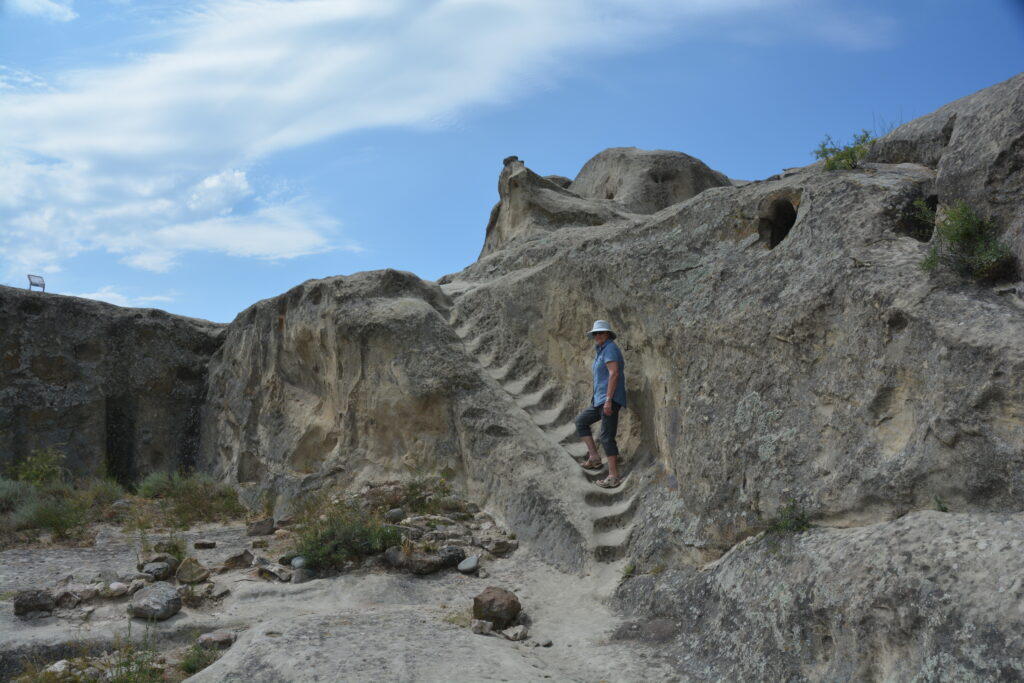
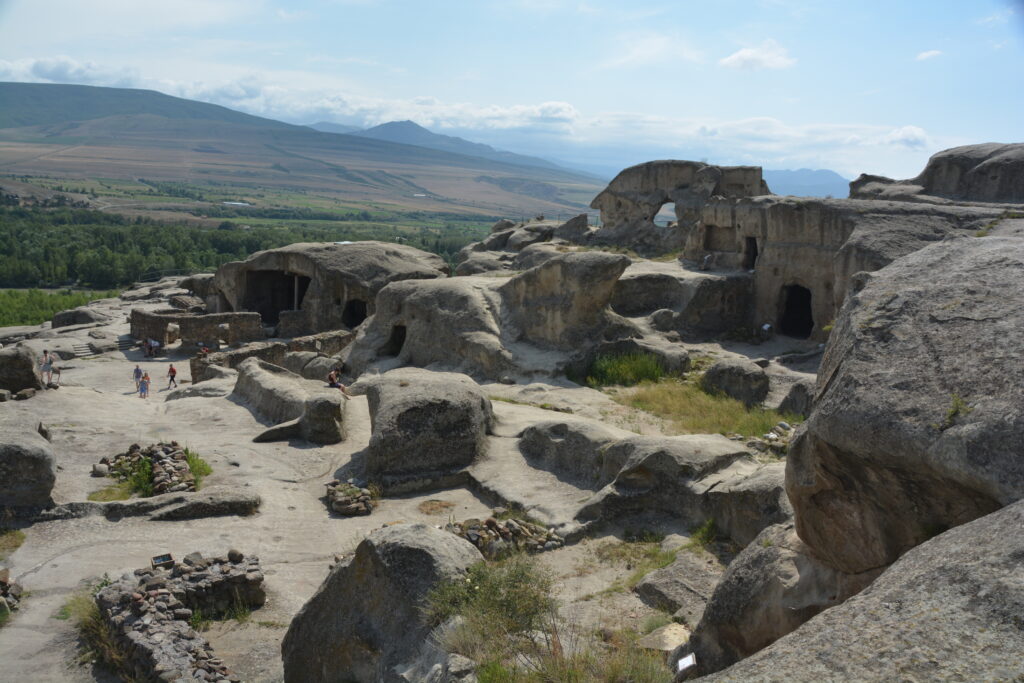
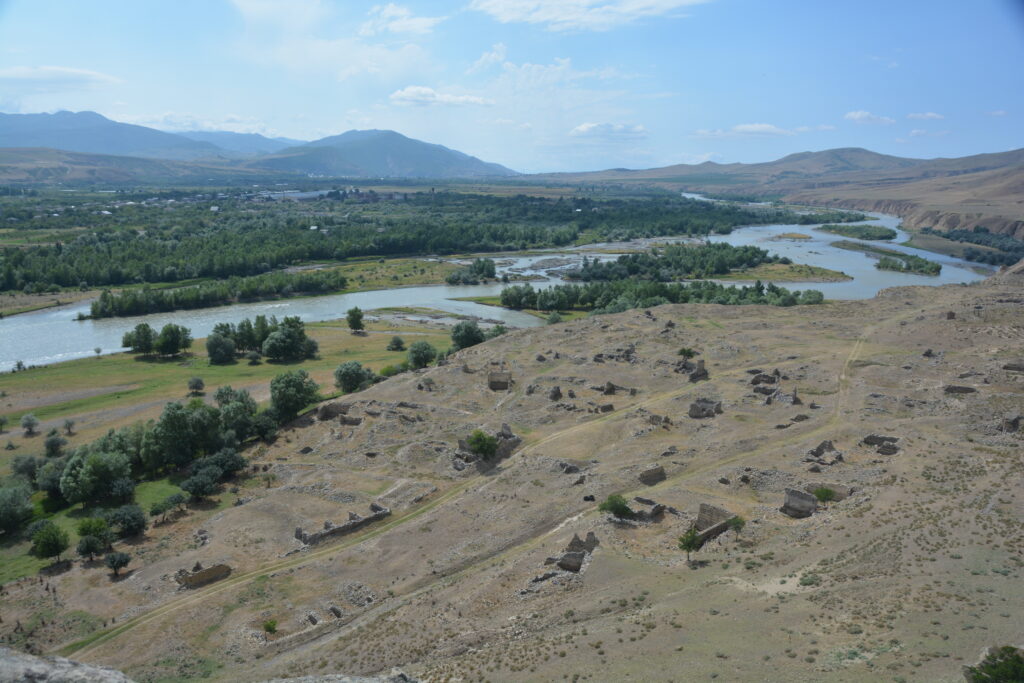
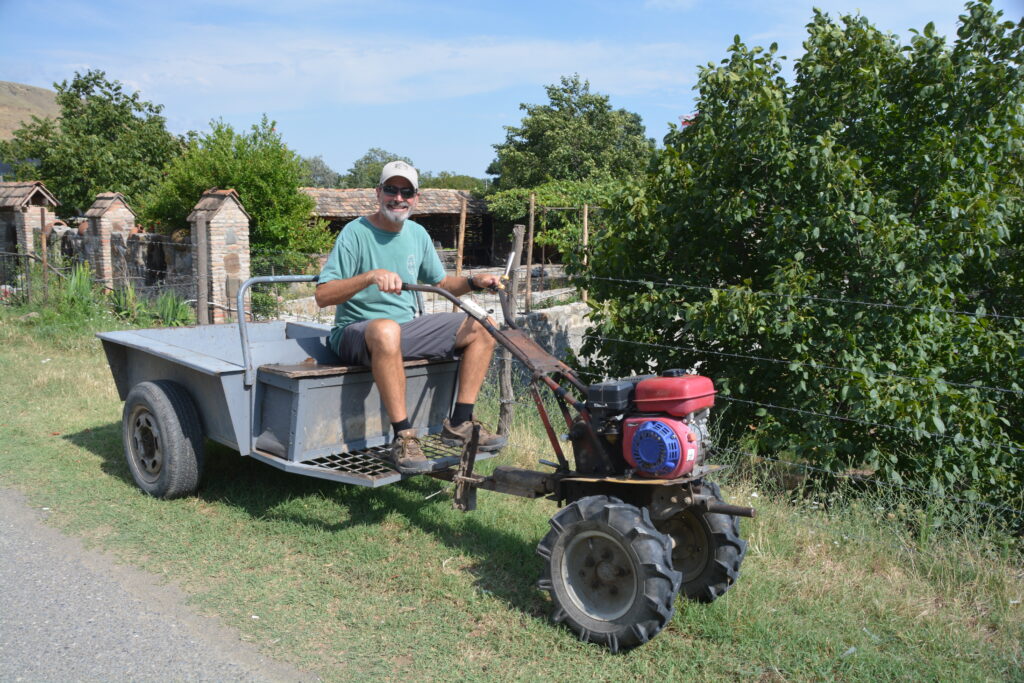
We ended the day in an obscure village in the back yard of an older couple who had built some camping facilities near Borjomi National Park. We had all the conveniences we needed, including showers and a washing machine, in the most peaceful rural setting imaginable. Next to Tramp was their personal veggie patch and piles of hay which had been cut but not bundled. We loved it.
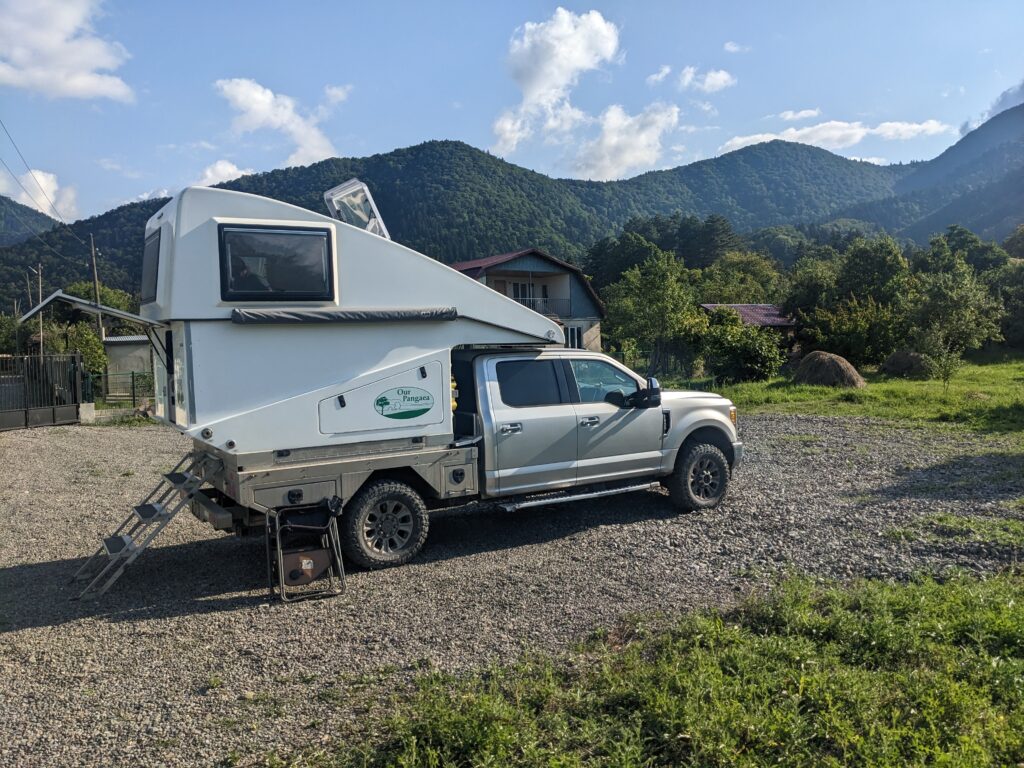
We followed the Kora River, the same river we have floated on and camped on in Tbilisi, to the town of Borjomi, a picturesque river town famous for it’s special natural mineral water, to get a taste of the national park all around us. We then followed the road towards Georgia’s second largest city, Kutaisi, on a major road connecting the two largest cities which is being rebuilt through the mountains as a series of dramatic tunnels and bridges by China as part of their controversial Belts and Roads Initiative.
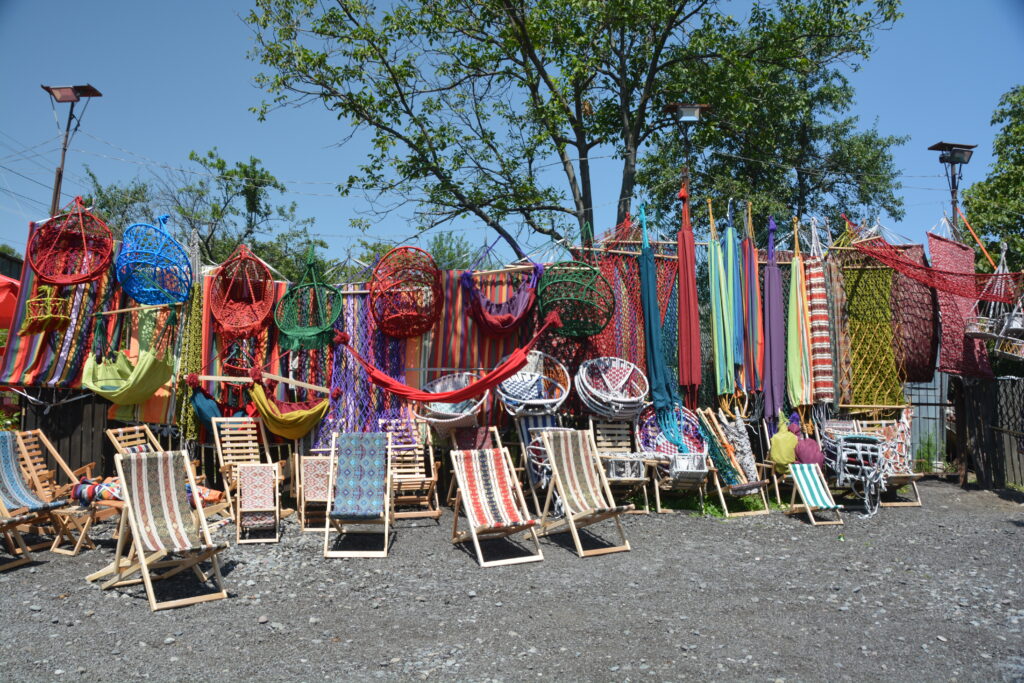
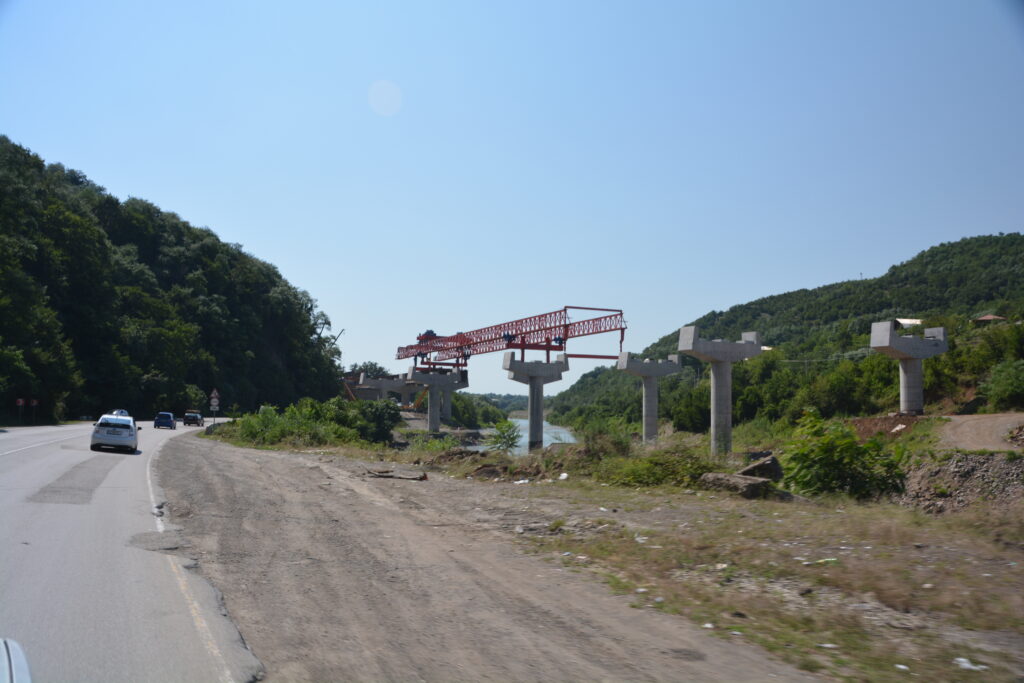
On a hunch from one of our apps we followed a series of narrow one lane roads up the mountain overlooking Kutaisi to Hotel Elegant, a three star hotel which allows overlanders to set up their camper in their very small cement carpark. The family warmly welcomed us and we quickly came to an agreeable price. Julie and I then walked down into the city via the impressive – and almost completely rebuilt – 11th century Bagrati Cathedral. The cathedral basically had crumbled to a big pile of rubble before restoration work began in the 1950’s and have returned it to some of it’s past glory.
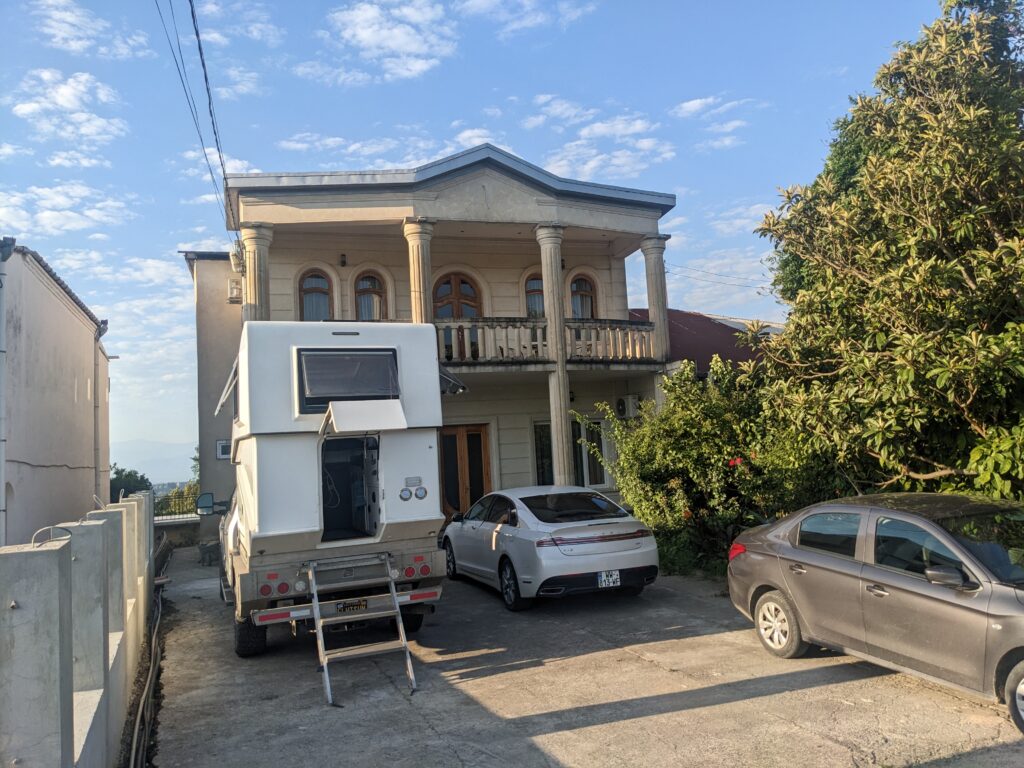
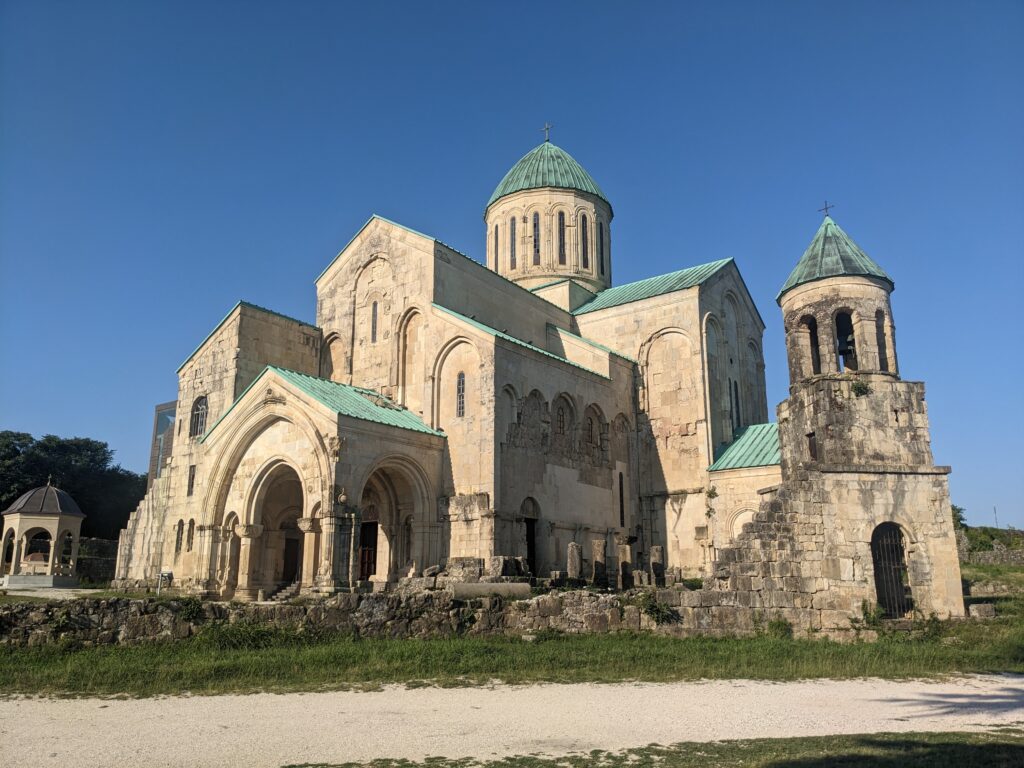
We walked down to the river and had drinks and dinner at a beaut outdoor café, enjoying traditional Georgian cuisine, before returning to Tramp via a funky little cable car that took us to an amusement park in full swing upon on the hill near our hotel.
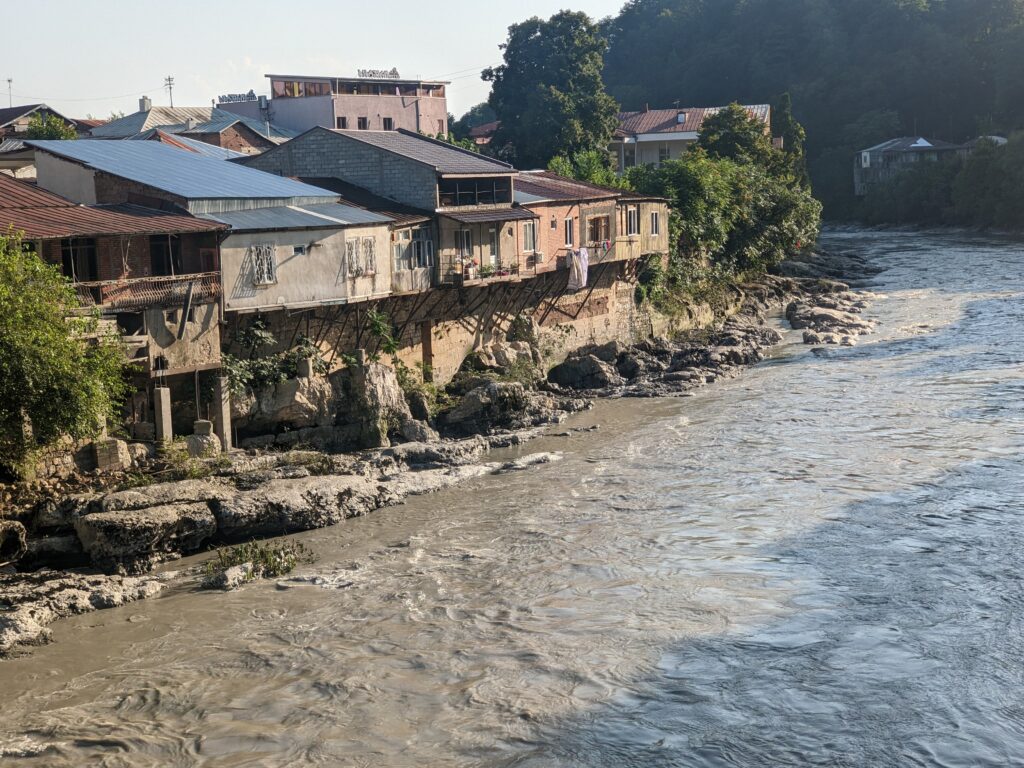
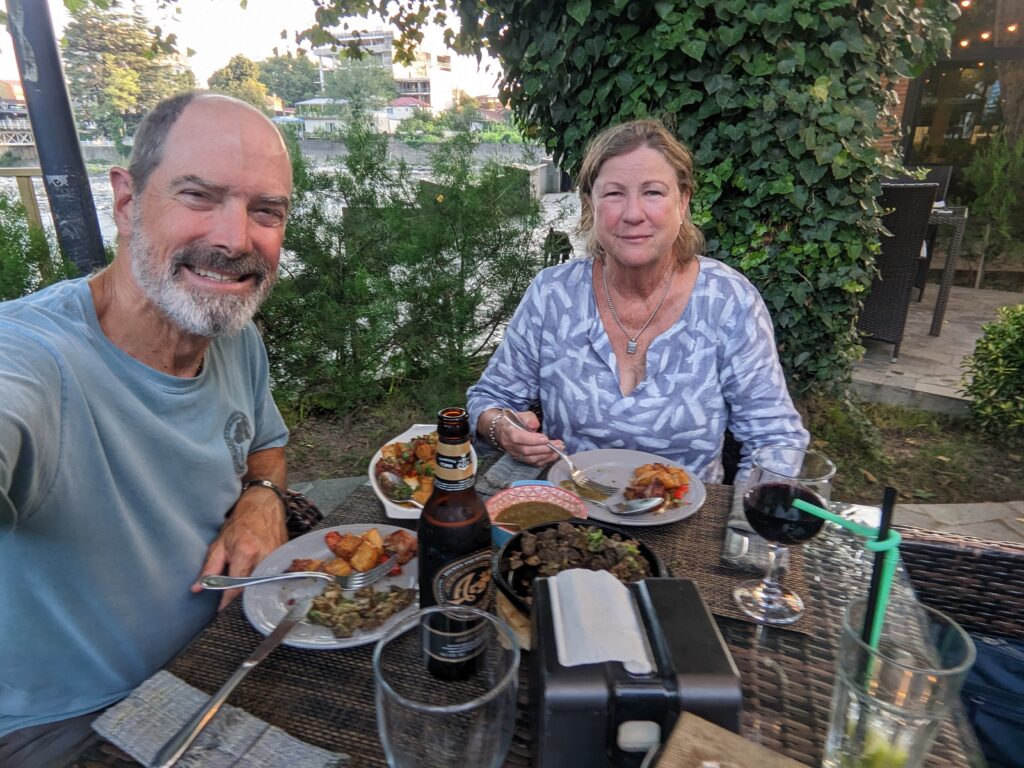
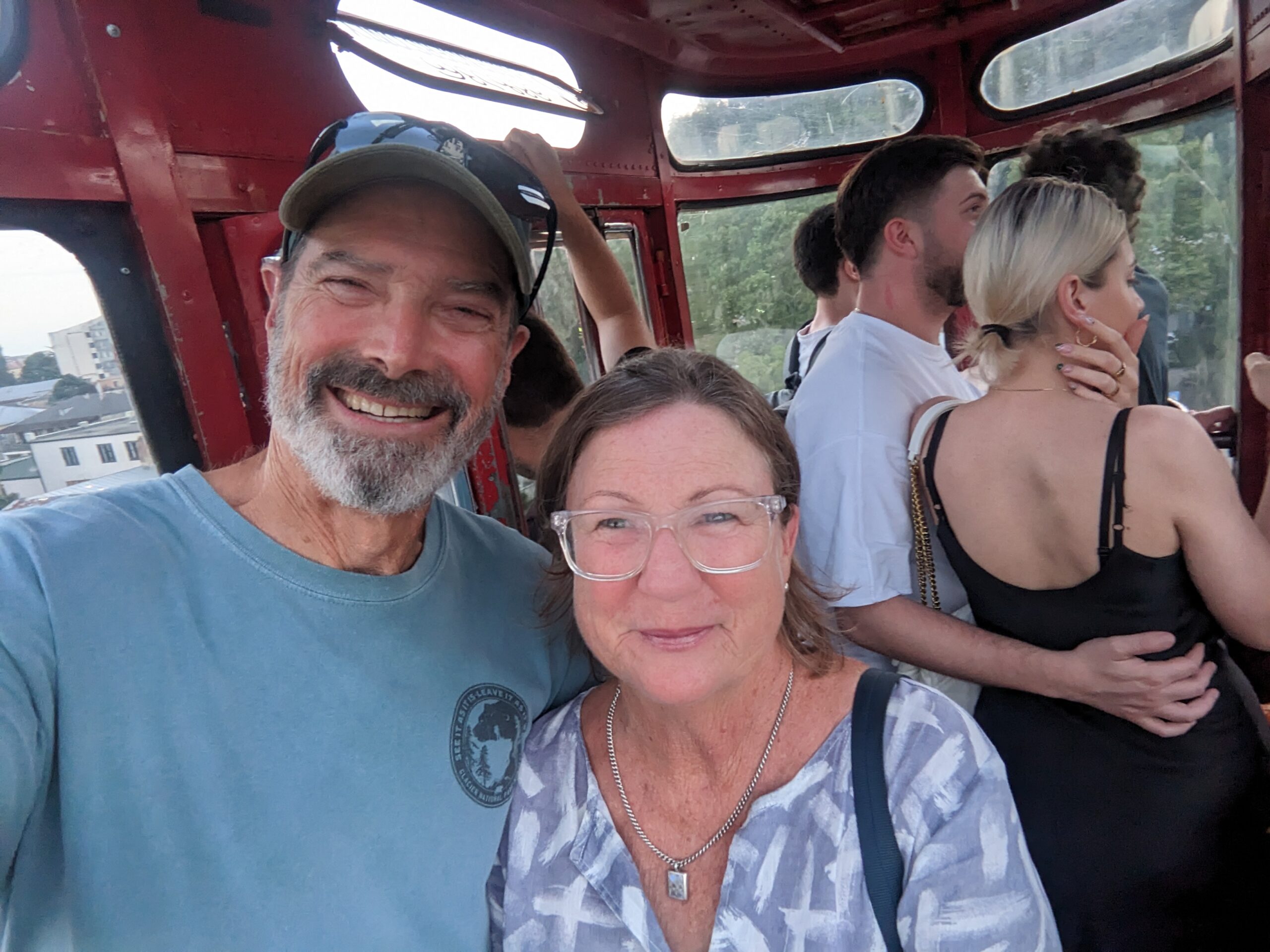
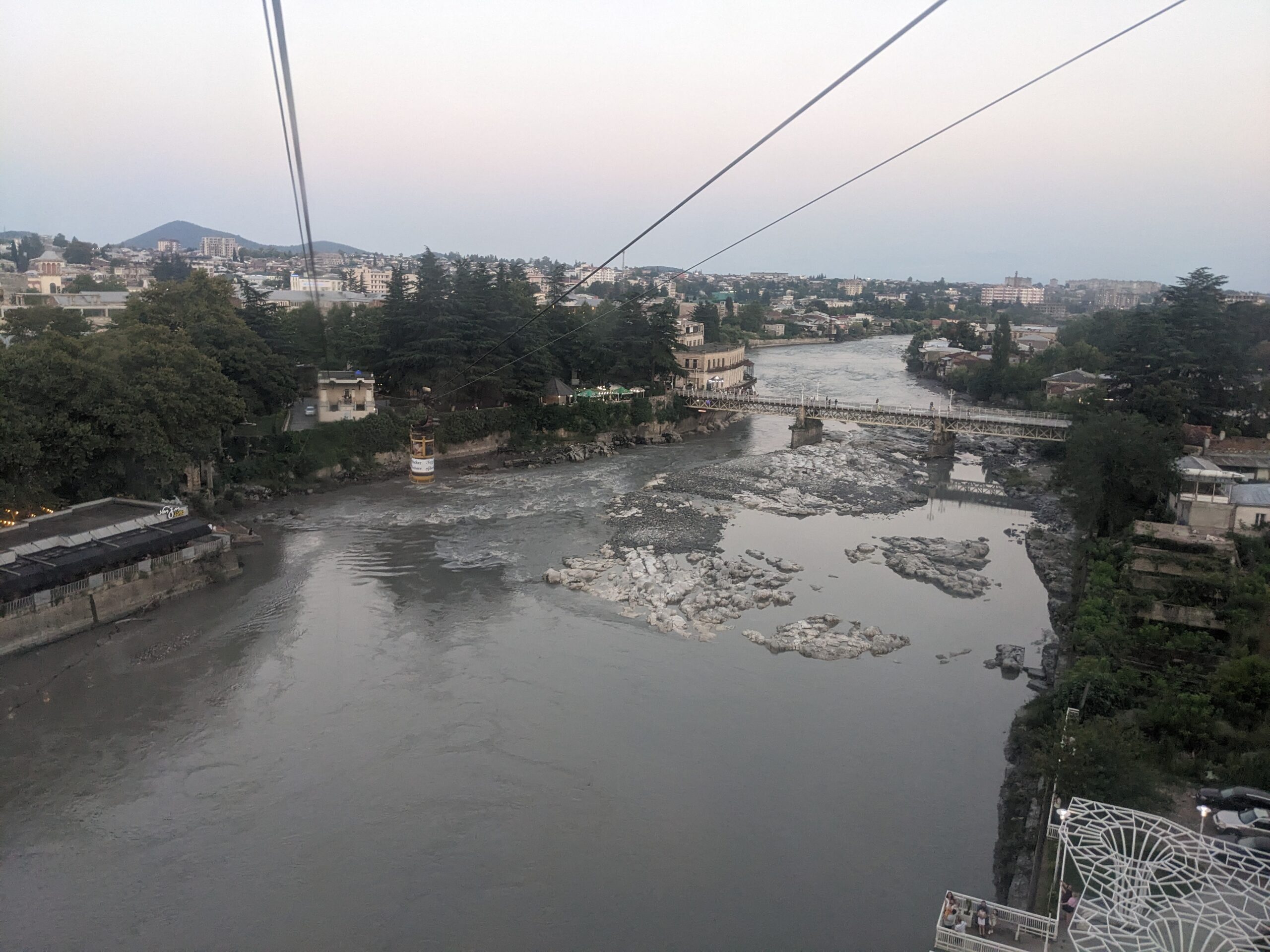
Here’s a few shots of the colourful market we visited in Kutaisi the next morning.







But the Greater Caucasus Mountains were calling again and we headed northward, stopping at Sataplia National Park to see 120 million year old dinosaur footprints – very cool – and walk through a limestone cave – a bit meh. As we’ve seen at other places, the Georgians let themselves down at tourist sites by making half an effort. At this place they insisted we take a guided tour, okay, if we have to, but the guide barely spoke English and after her Georgian and Russian spiels at the beginning of the tour those people just took off and were never seen again. In fact, we never saw the guide again either.
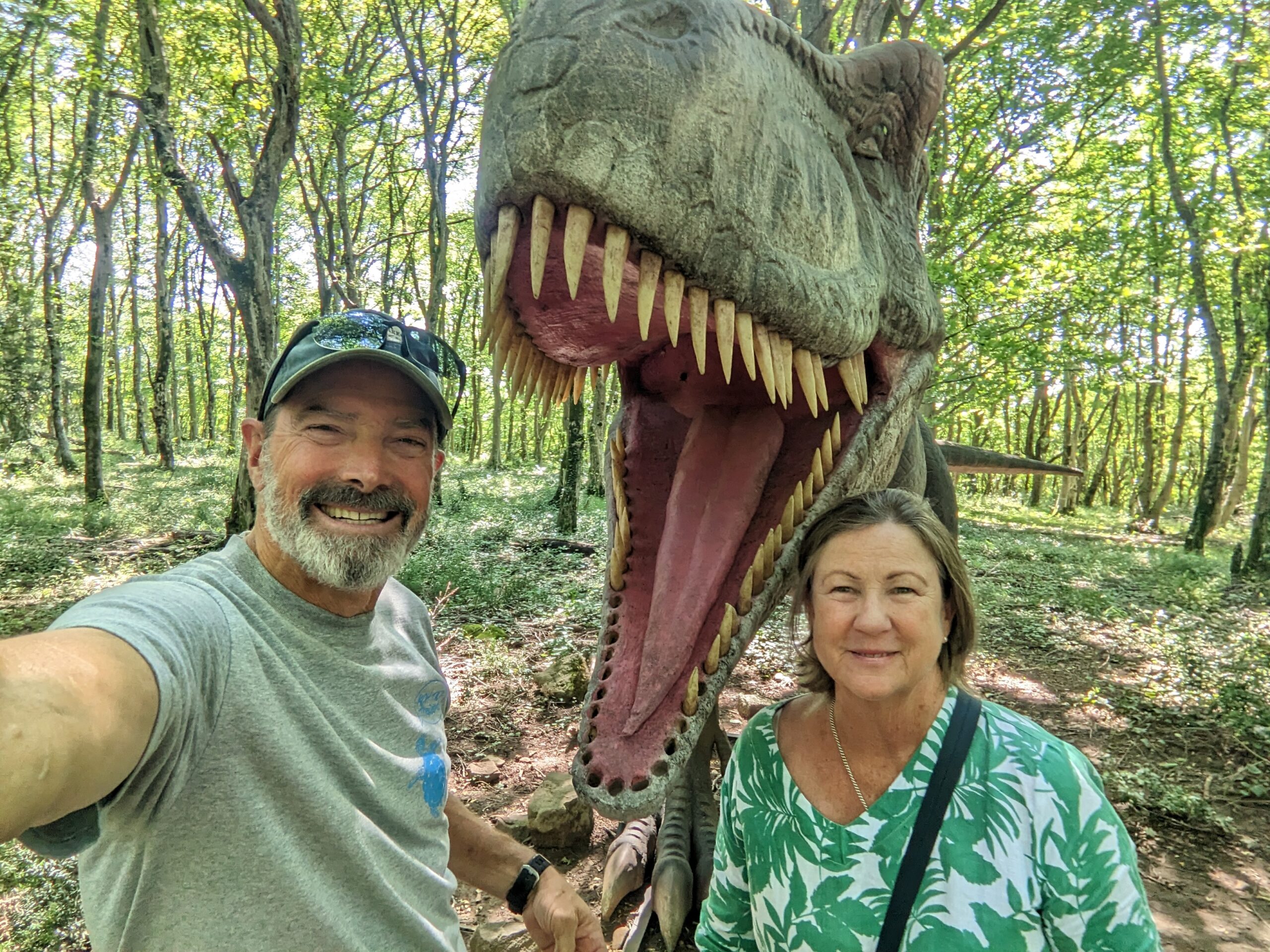
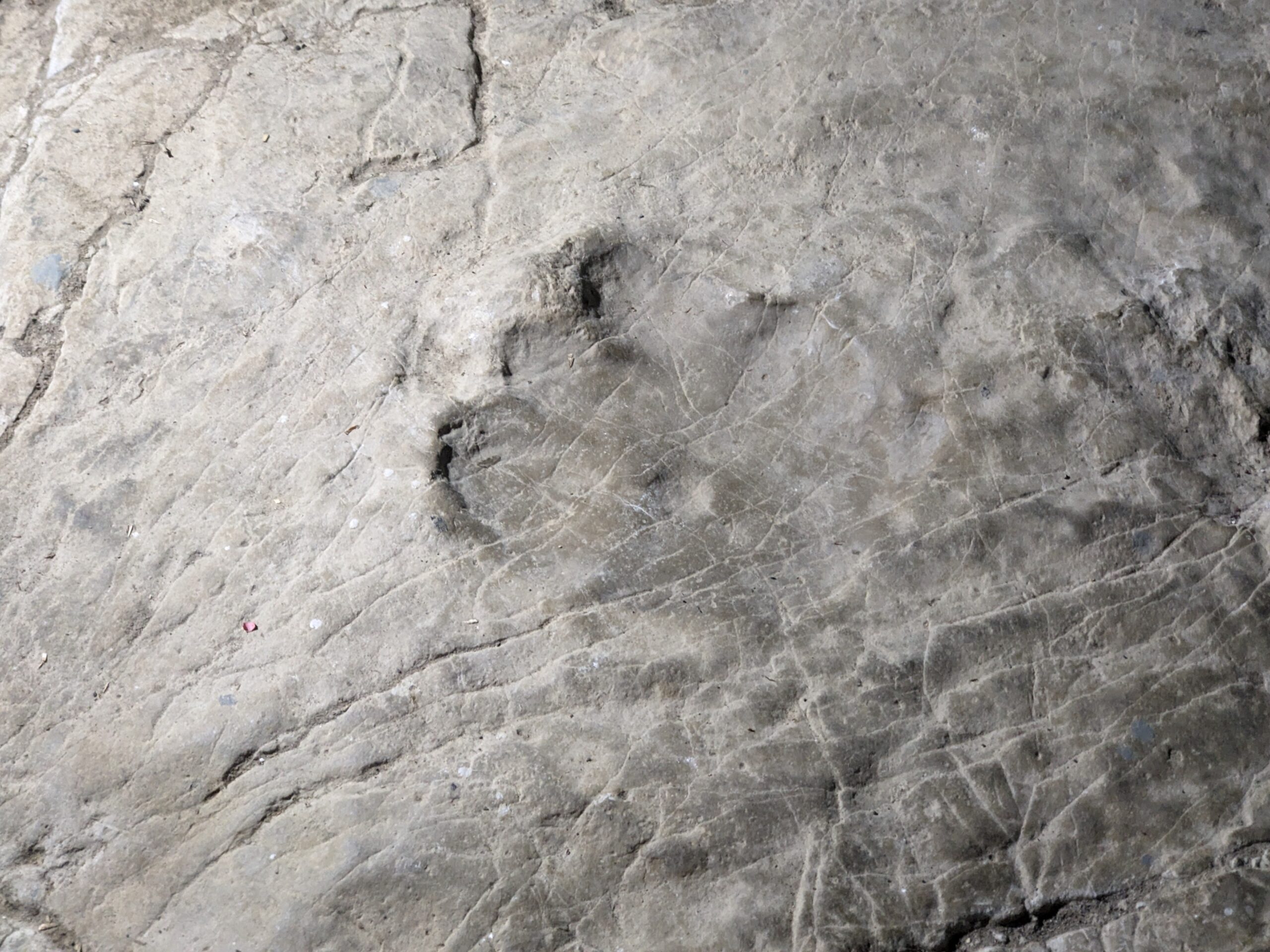
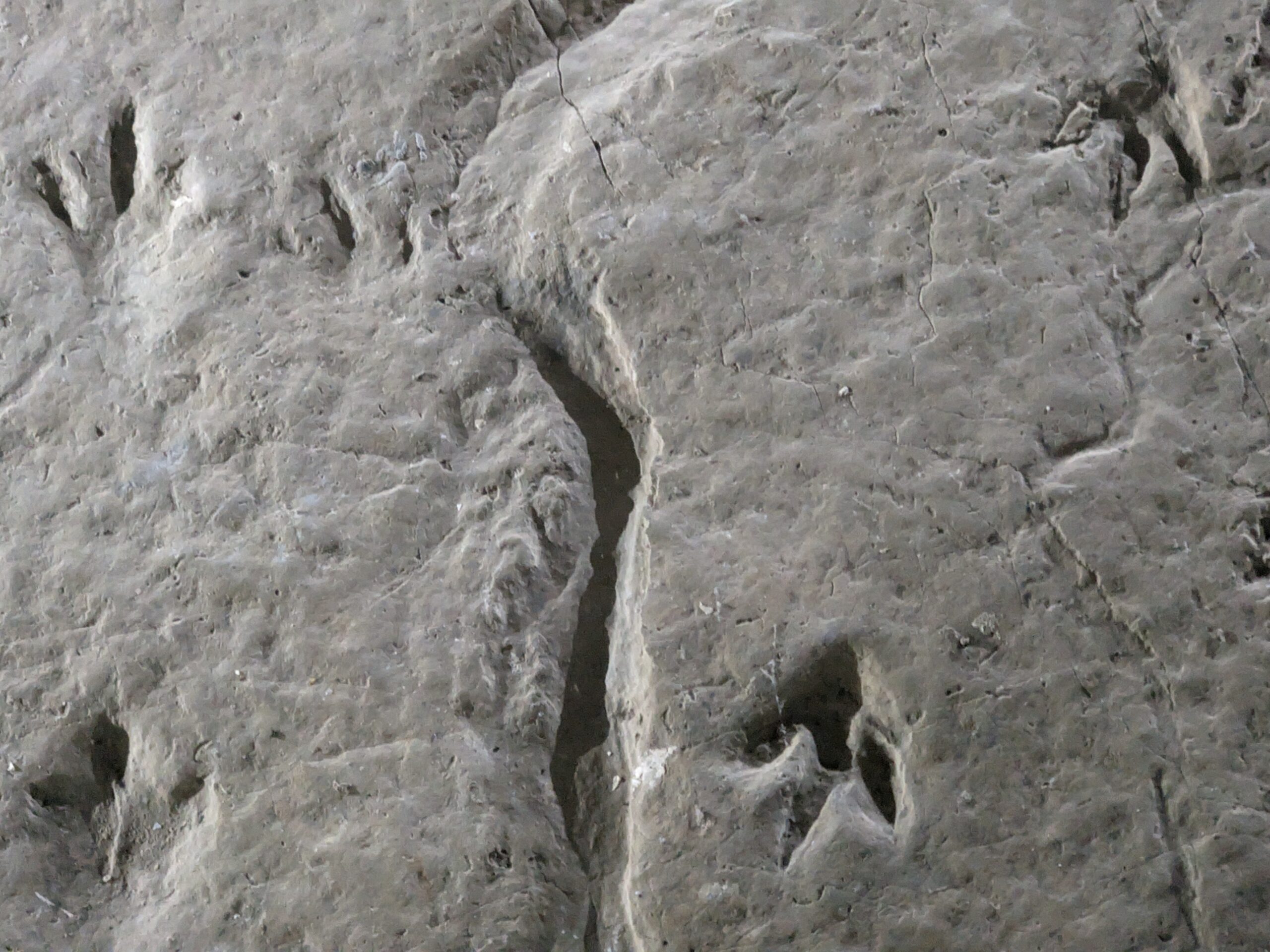
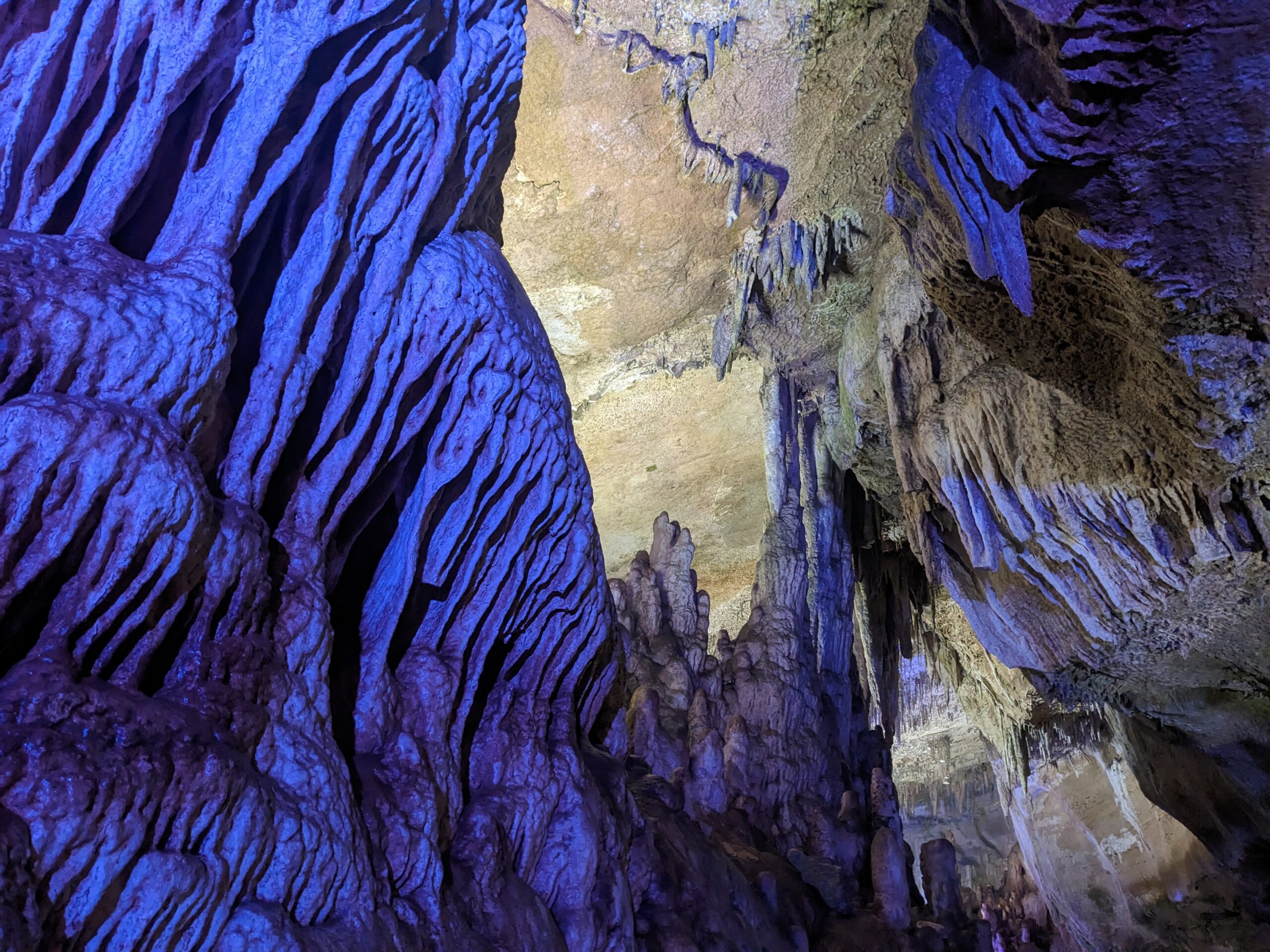
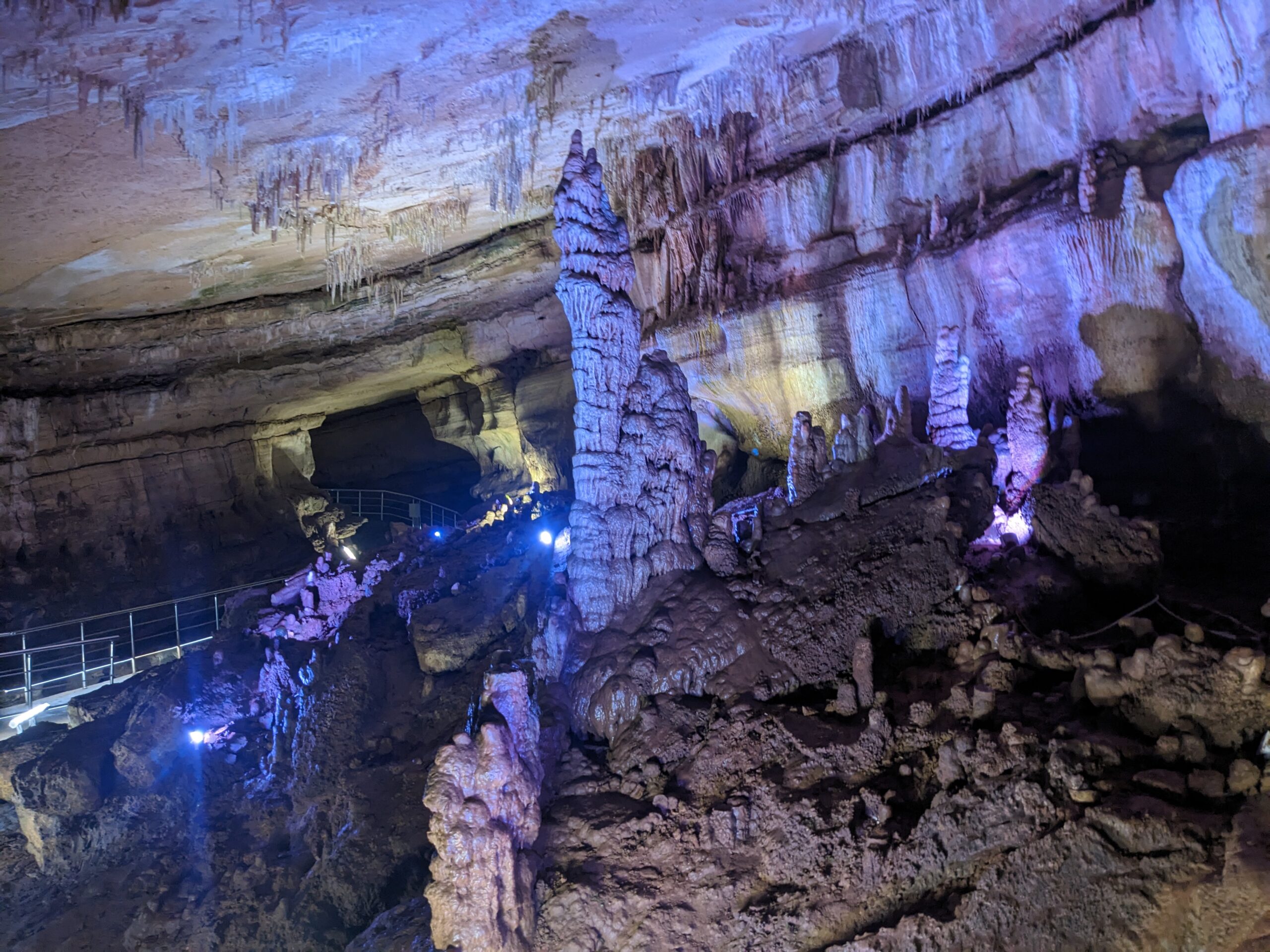
The day was stinking hot, reaching 40°C (104°F), so we begged off a couple of other sites that involved too much walking, and headed for the mountains where it would be cooler. And the drive was super cool, following the muddy Rioni River through deep narrow gorges, slowly climbing while the thermometer slowly dropped, through Tsageri which is sort of the gateway to the mountains.
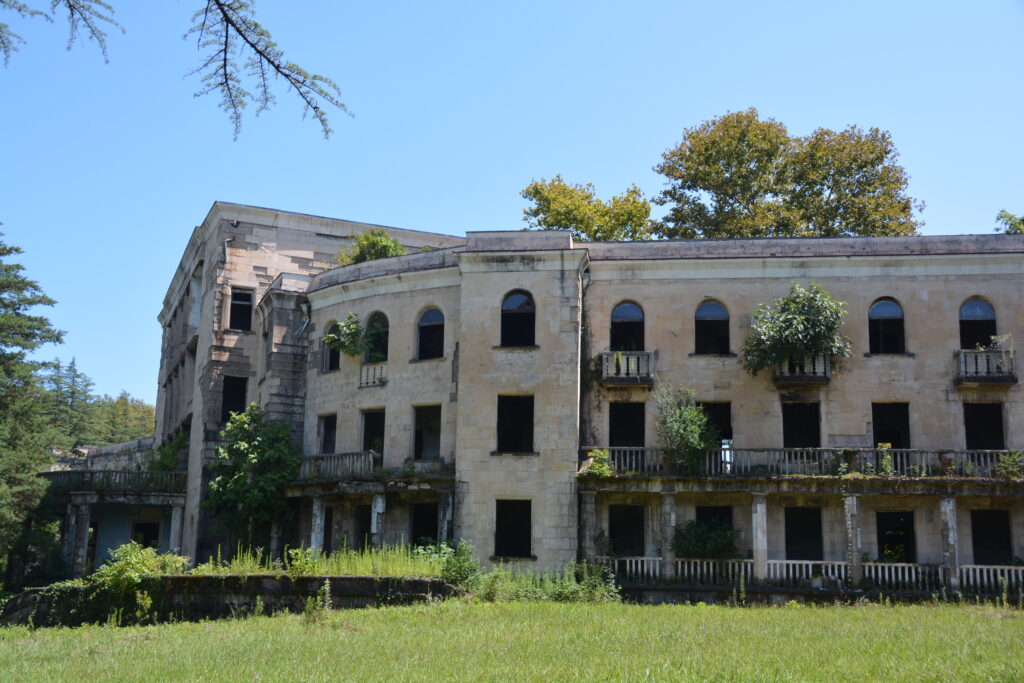
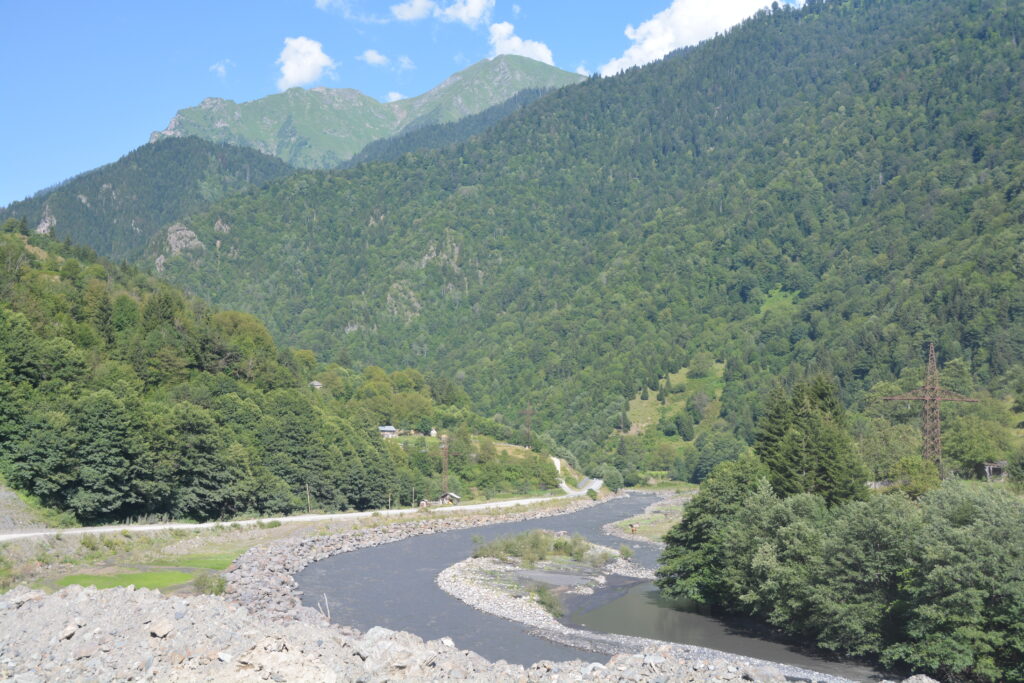
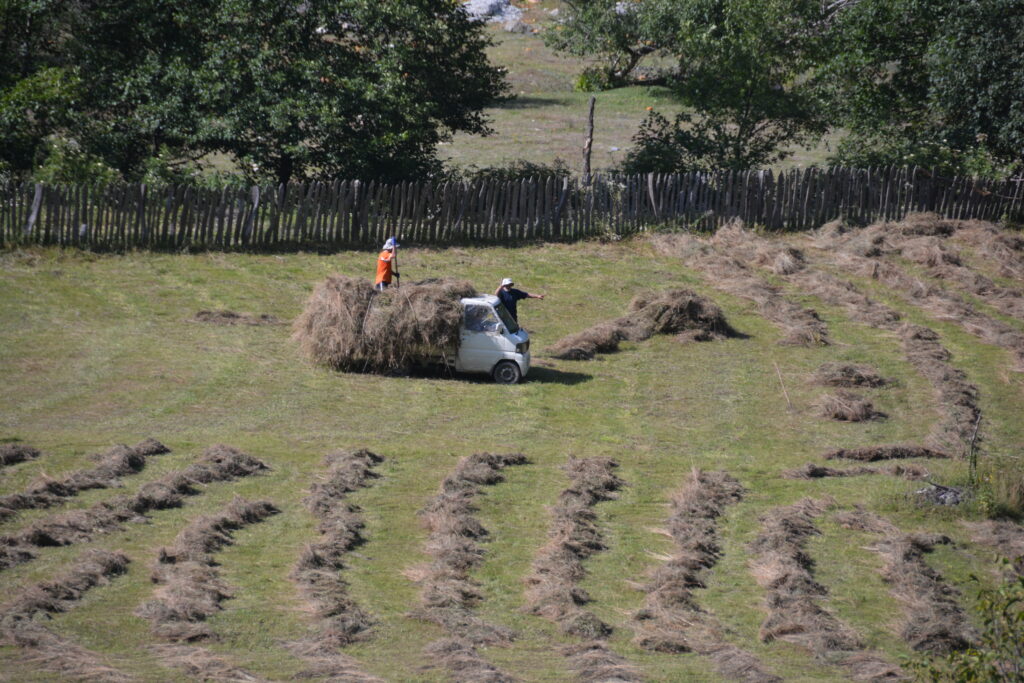
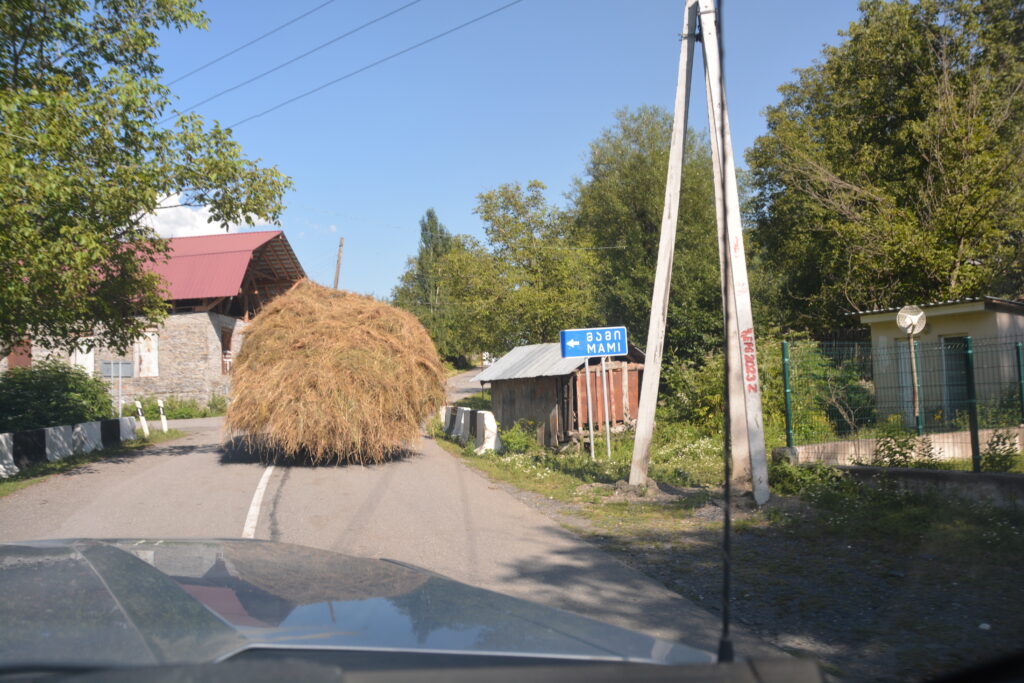
We eventually camped in an old Soviet mineral spring resort nestled in amongst the conifers after following a rough-as-guts single lane track up into the mountains. Built sometime last century, now totally abandoned and in complete disrepair, the site provides yet another example of Soviet infrastructure that serves absolutely no useful purpose to the good people of Georgia. I collected some pieces of timber from the remains of these Soviet buildings and built a nice fire for the night. It’s not often you get a chance to burn part of the USSR’s legacy.
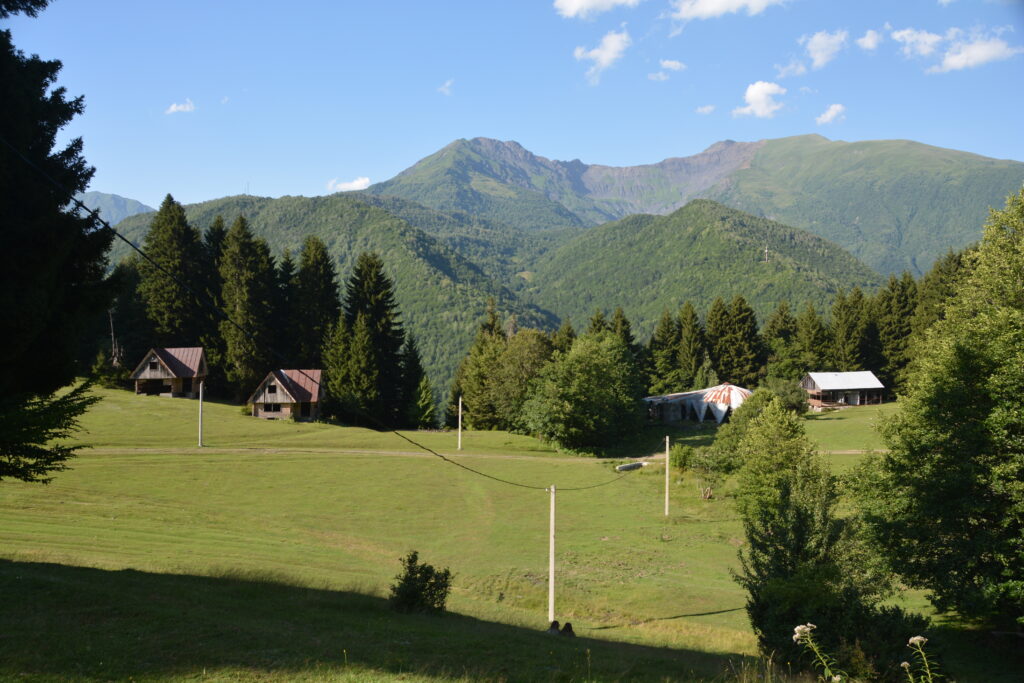
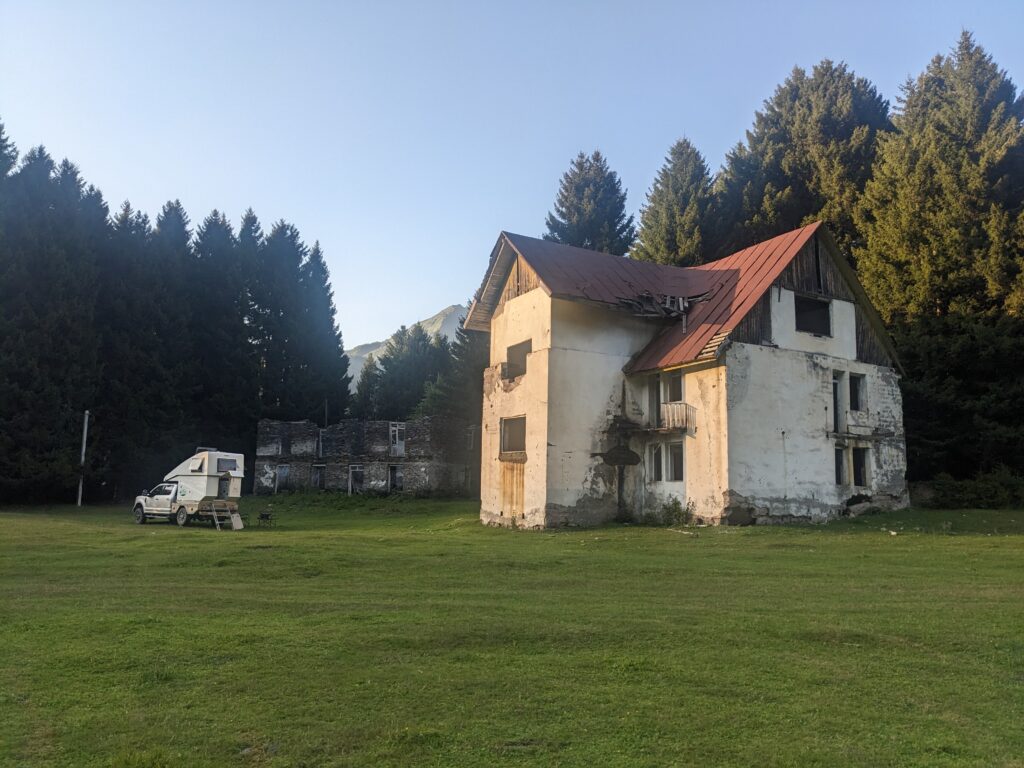
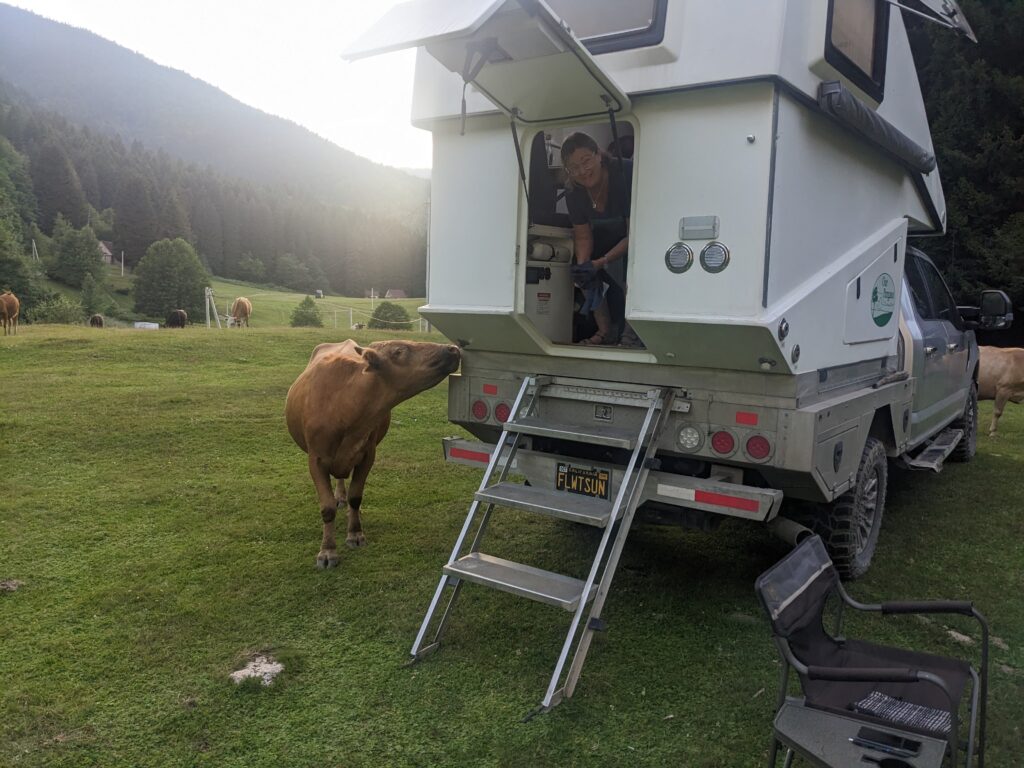
The upper Svaneti region of the Greater Caucasus Mountains is famous for it’s dramatic mountains and it’s special place in Georgia’s history. The Svan people (pronounced Swan), who have lived in these mountains for over a thousand years, have their own unwritten language substantially different from Georgian, their own history, culture and even elements of their religion are all different.




These photos show another odd feature of the region. The Soviets built hundreds of almost identical homes in this valley. Over the years many have been modified a bit but most are now in very poor condition.
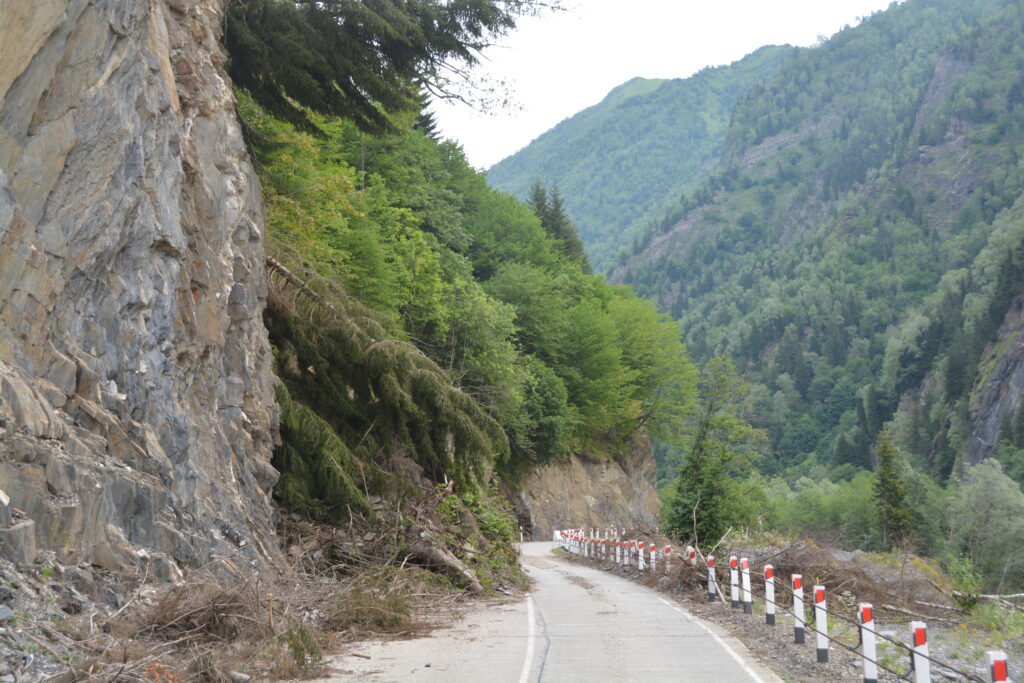
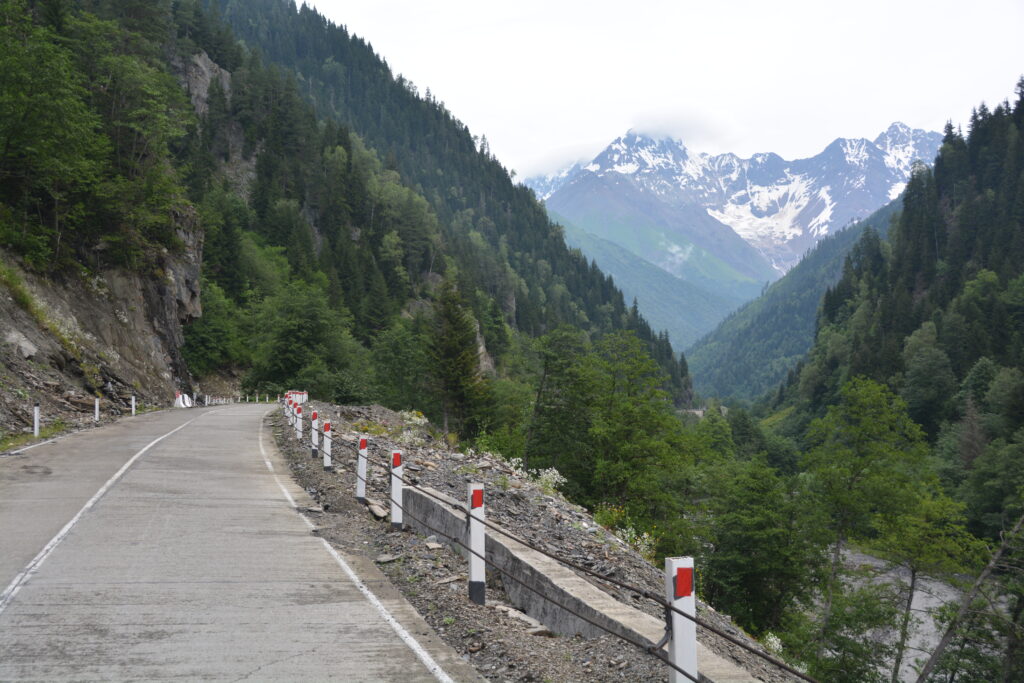
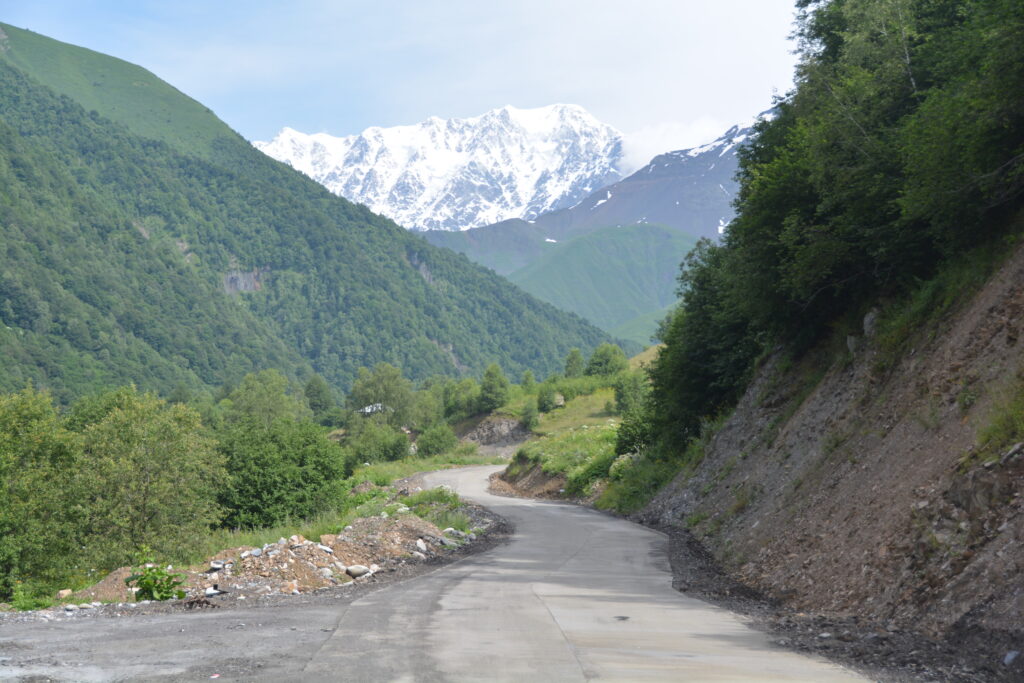
In the middle ages the Svan built a series of towers high on the mountains which they lived in and used to defend themselves against unwelcomed visitors. Today there are literally hundreds of these hearty towers still standing, dotting the rugged landscape and in some case still housing families. Luckily for us there is an adventurous winding mountain road that makes a huge loop through the Svaneti region and gave Julie and I an up-close chance to see the mountains, the towers and this unique environment.
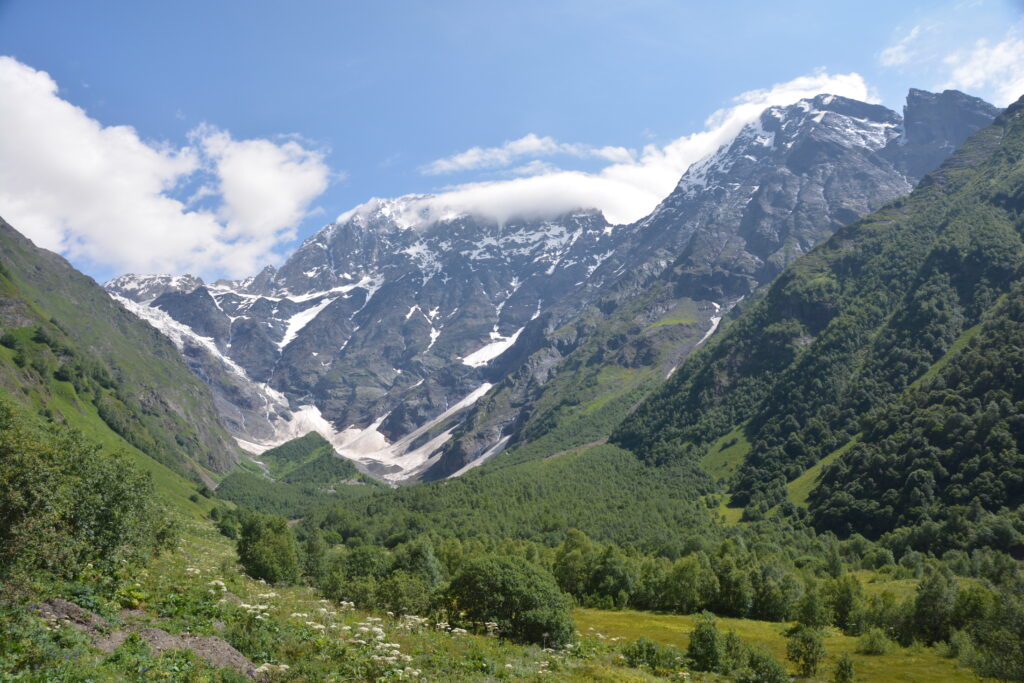
As we weaved our way up the mountains, initially following the familiar dark grey waters of the Rioni River, snow-capped mountains and glaciers began to appear, and as we switch-backed our way upward beyond the tree line, the paving ended and the views went from stunning to beyond stunning. At the 2627 metre (8,600 feet) summit, the highest point for us on this trip, the views took our breath away. And it must be said, so did the quality of the road.
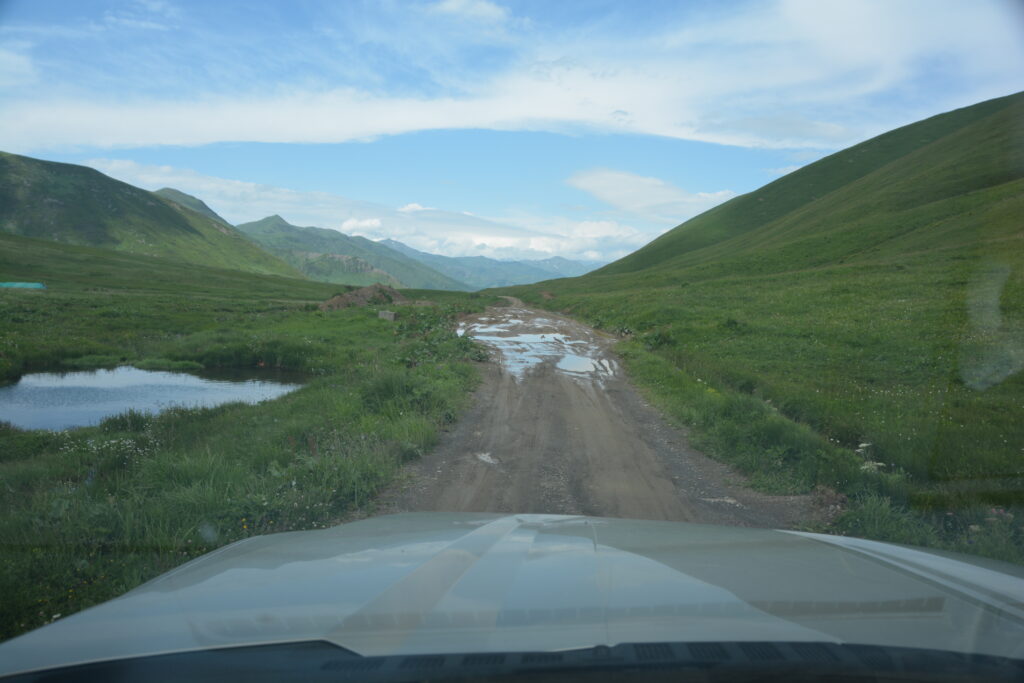
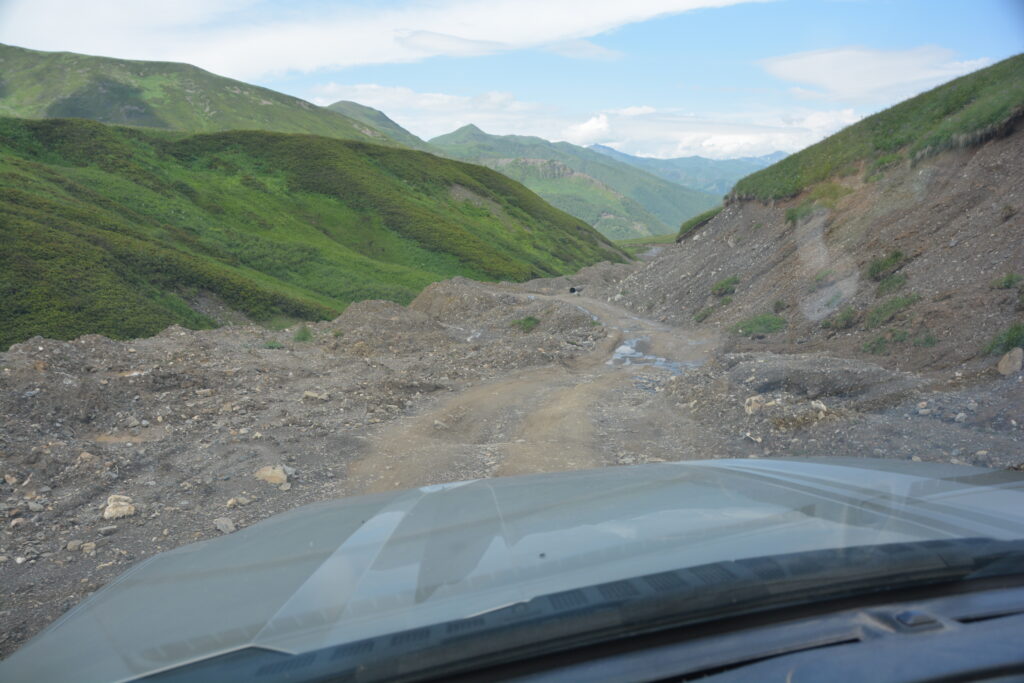
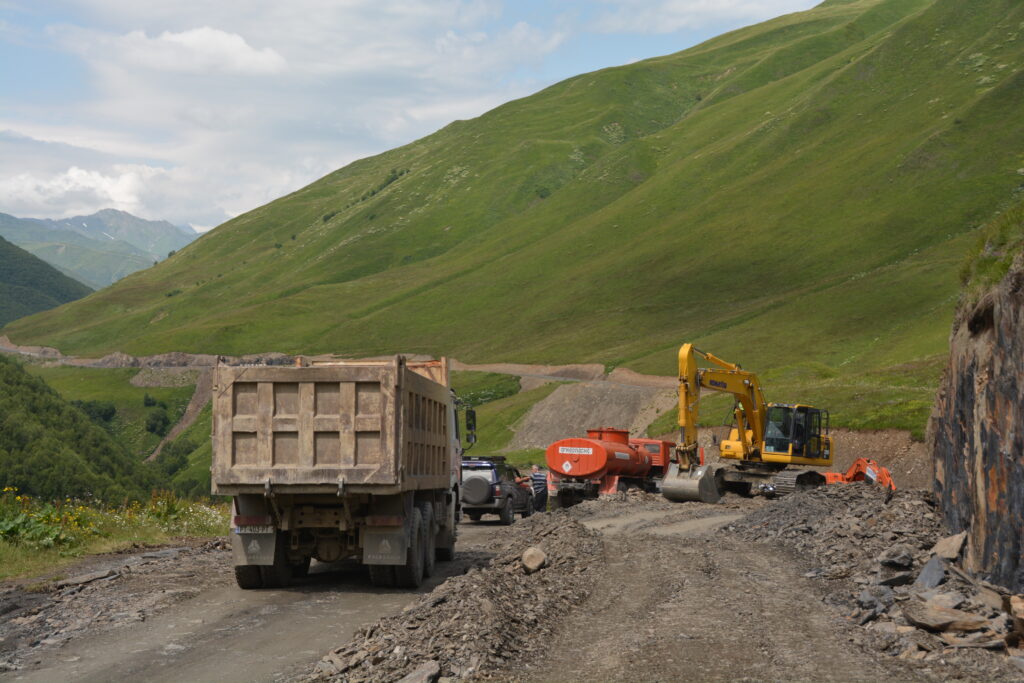
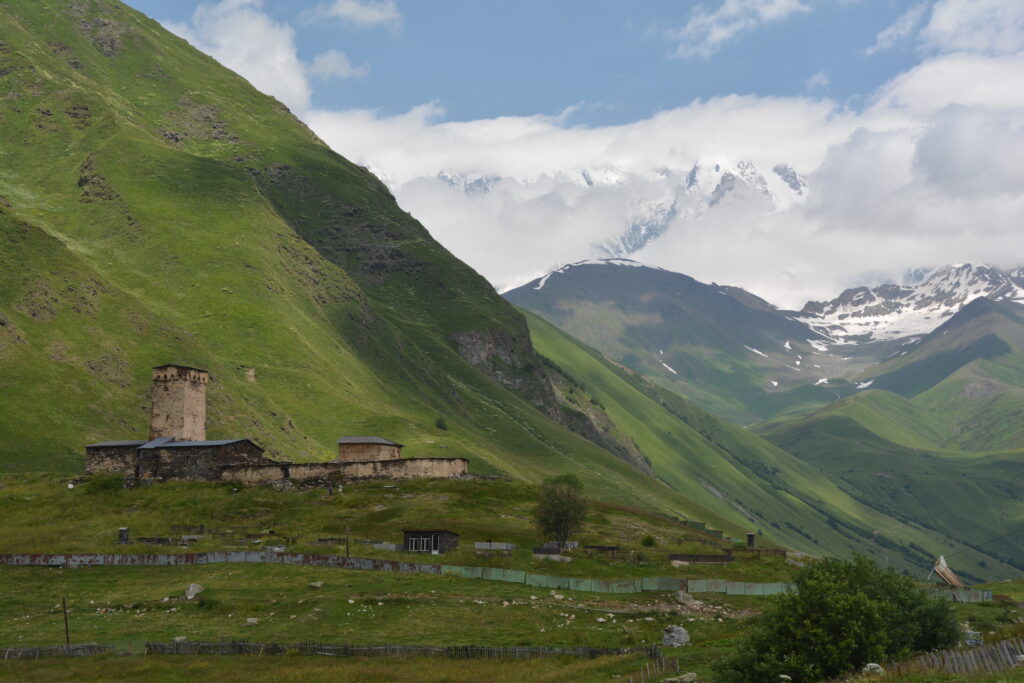
We made our way down to the small village of Ushguli, cut off for six months of the year by the snow, today sparkling in mountain sun. From one vantage point above the village we could count 18 towers built in and around the village, a scene more expected from Game of Thorns than real life. We parked Tramp and walked through this village, stepping back in time with the occasional hand-painted sign saying ‘Guest House’ or ‘Cafe/bar’ as the villagers try to lift themselves from the life of surviving off their small plot of veggies and a few animals to benefiting from visitors who come to admire these ancient towers.
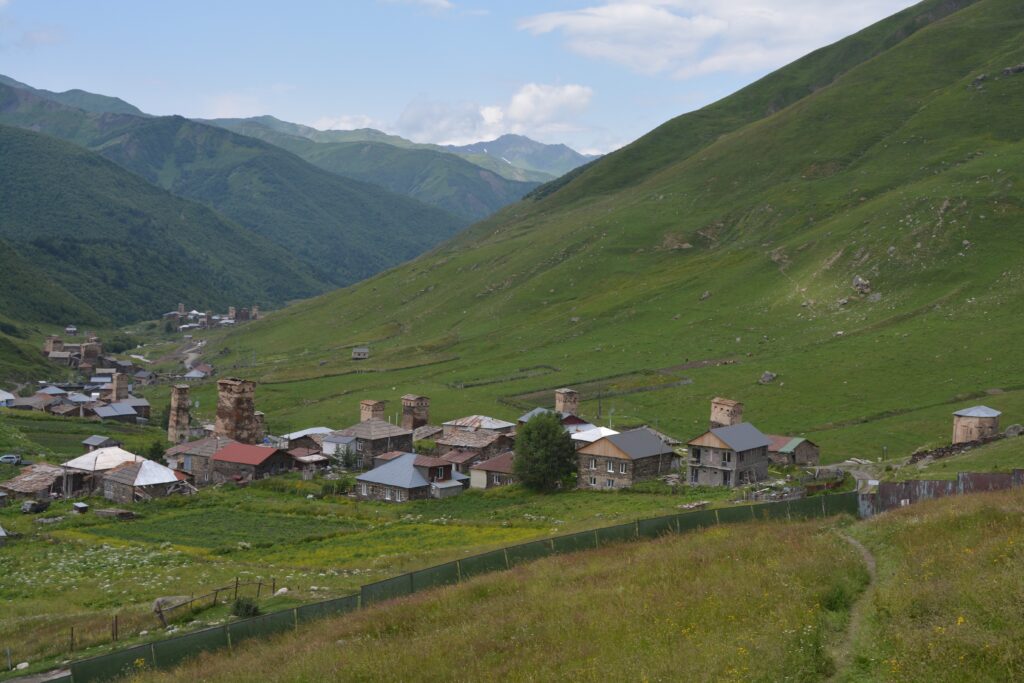
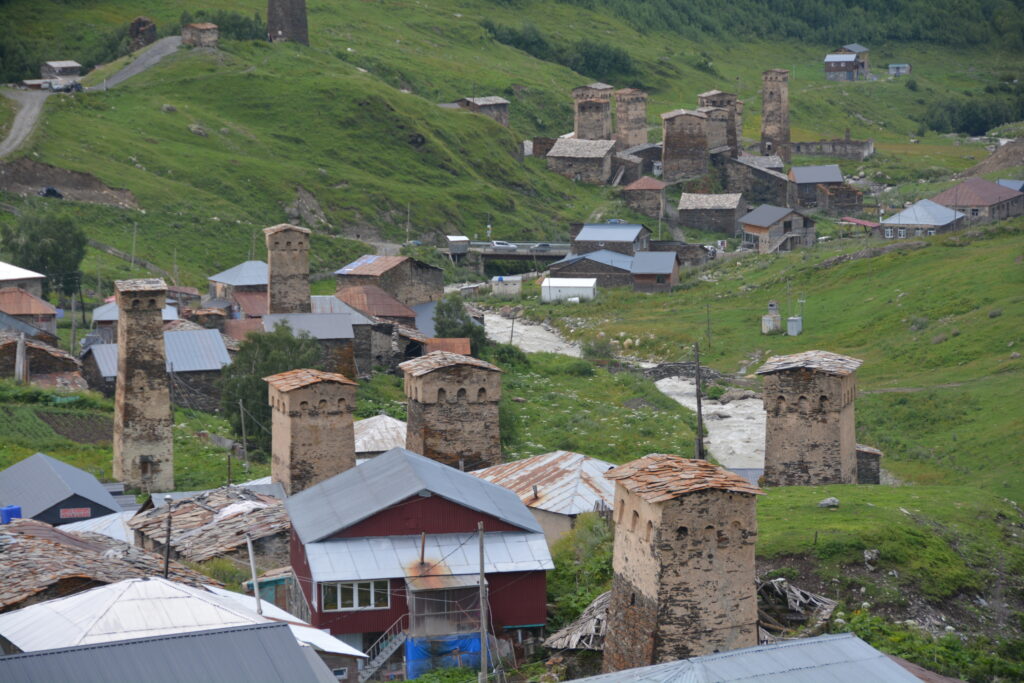
Ushguli reminded us that no matter how much you travel there are always amazing things waiting for you around the corner.
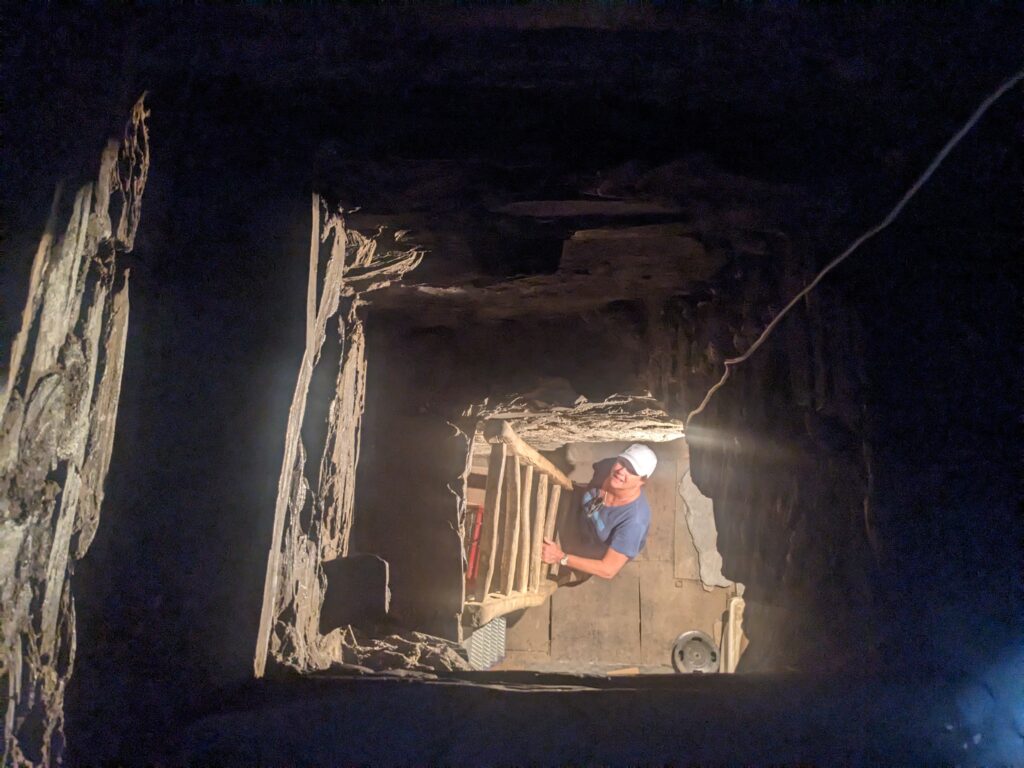
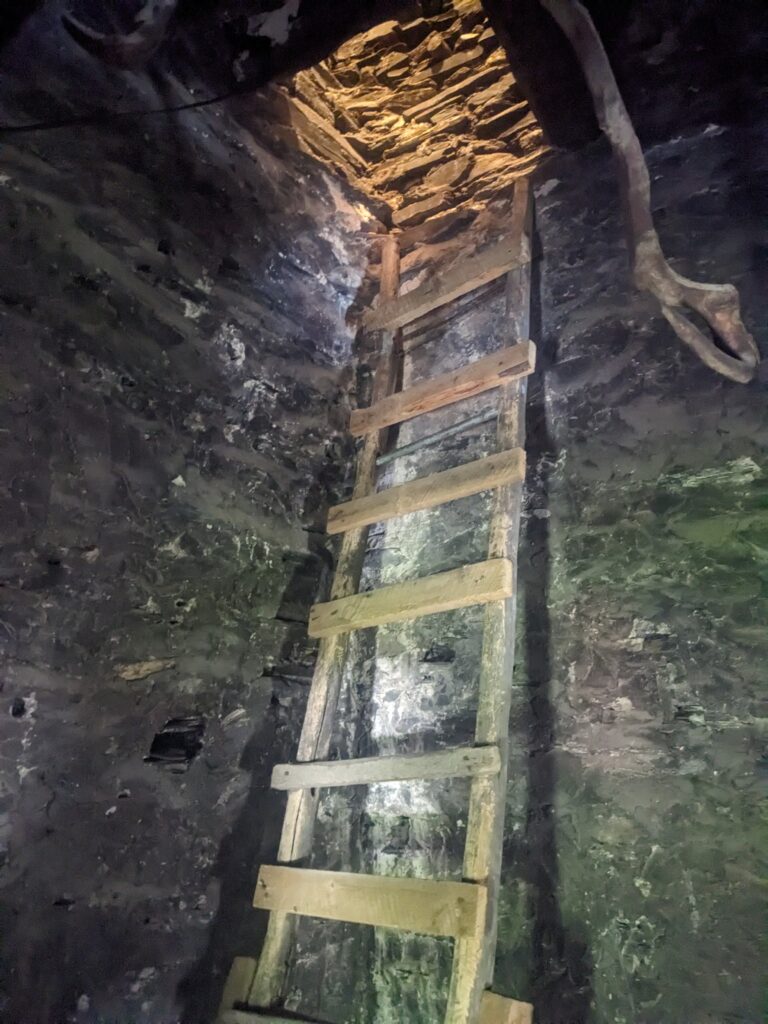
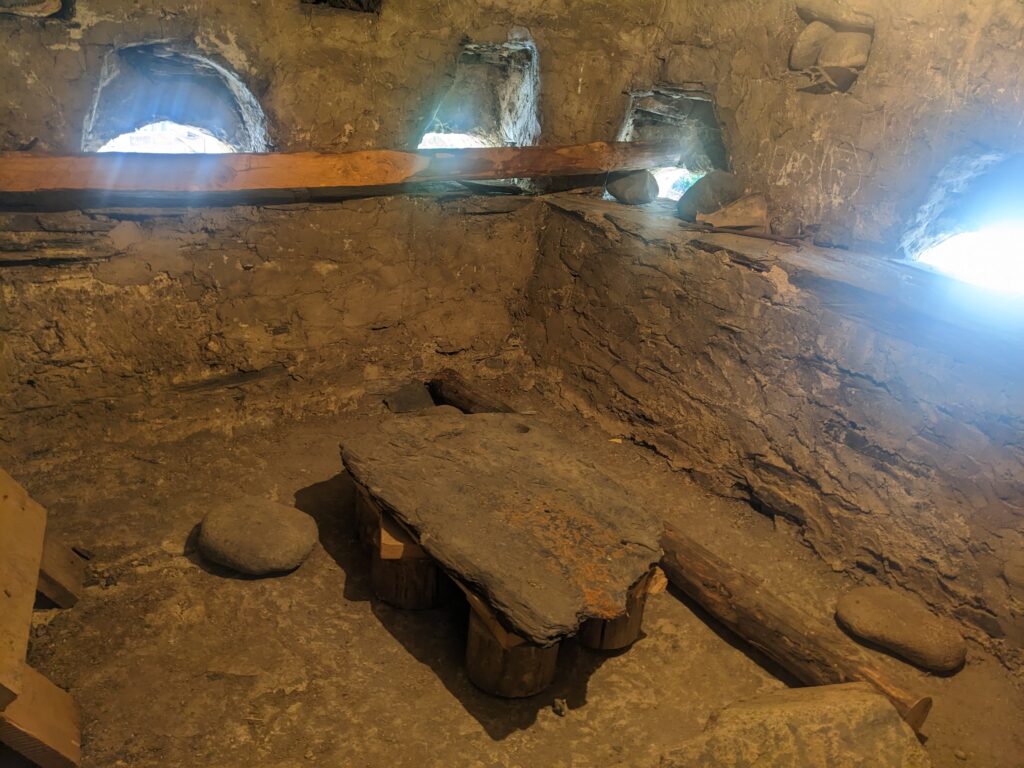
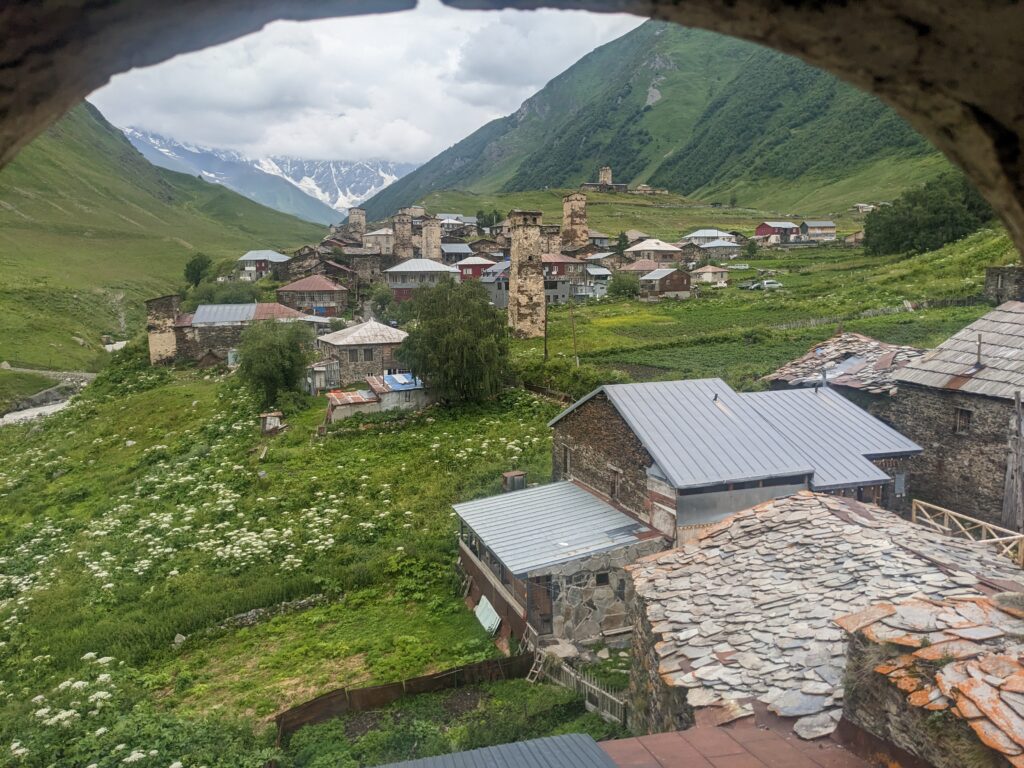
We drove through the mountains, the rain having arrived at short notice, to the only real town in the Svaneti region, the thriving tourist town of Mestia. It was cold and rainy and the clouds were sitting low on the mountains so we decided to camp for the night in the yard of a guest house and hope for better weather the next day.
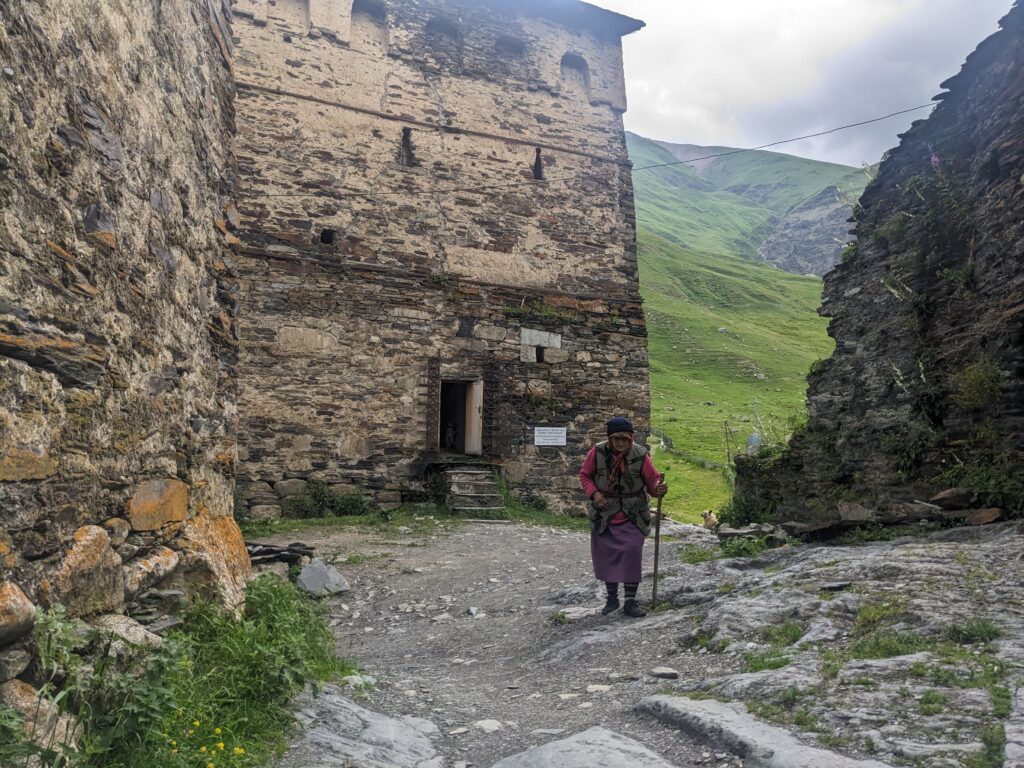
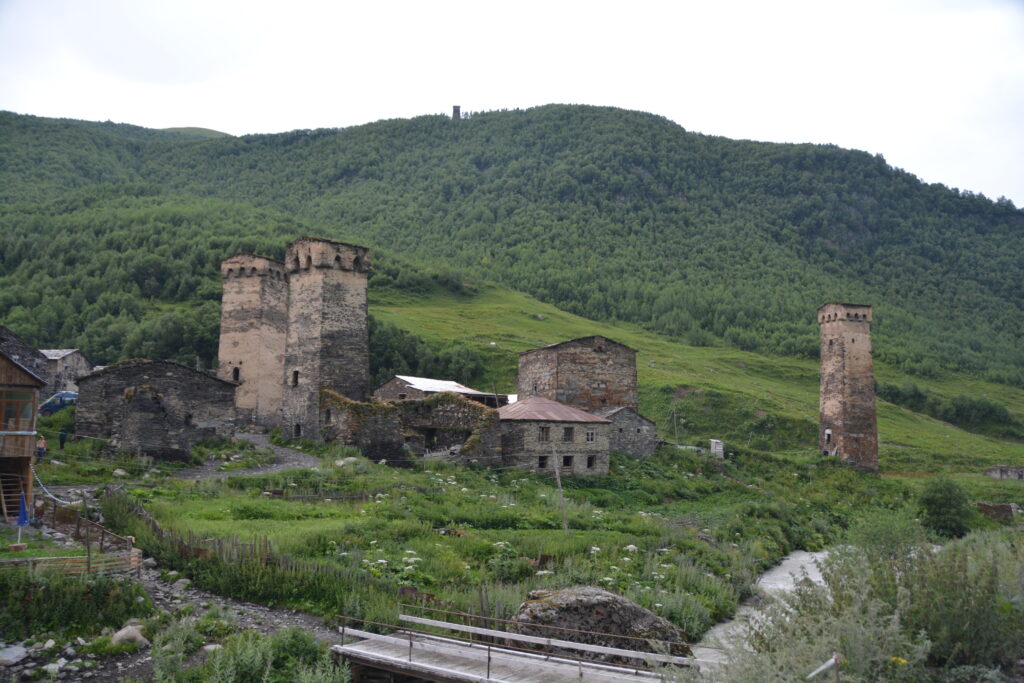
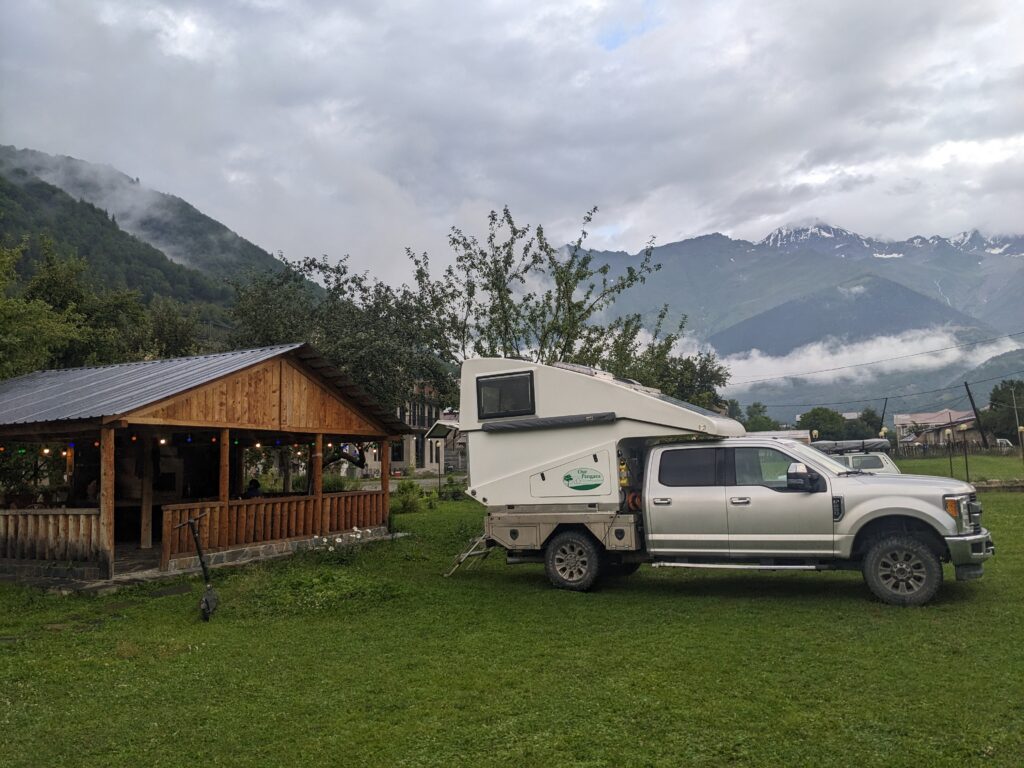
Tens of thousands, perhaps hundreds of thousands, of people come to Mestia and the Upper Svaneti region each year to get amongst these incredible mountains. And so it was we planned a day to do the same, although perhaps more modest than the fit young backpackers who head off for multi-day walks. Our plan was to do two short but special walks the easy way.
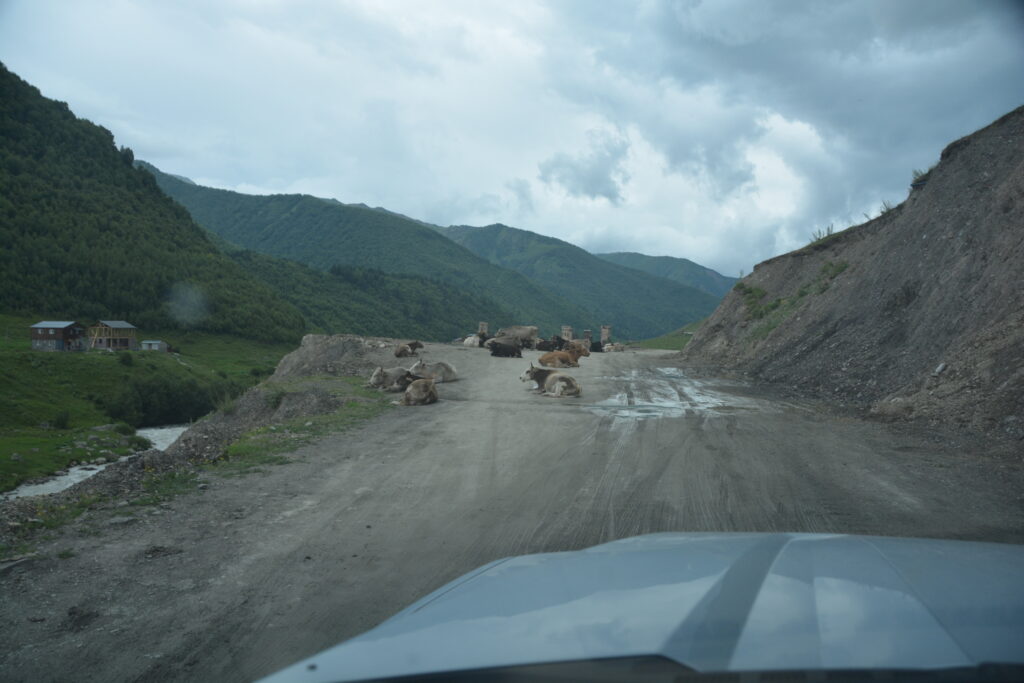
Mestia has a small ski resort with only a couple of lifts but in the summer the combination of a six-seated chair lift and a gondola whisked us to the top of the mountain at 2372 metres (7,800 feet). From this starting point we followed the ridge for a couple of kilometres, sparkling blue skies above us and breath-taking snow-capped mountains in all directions. No doubt about it, this walk would be tough to beat.
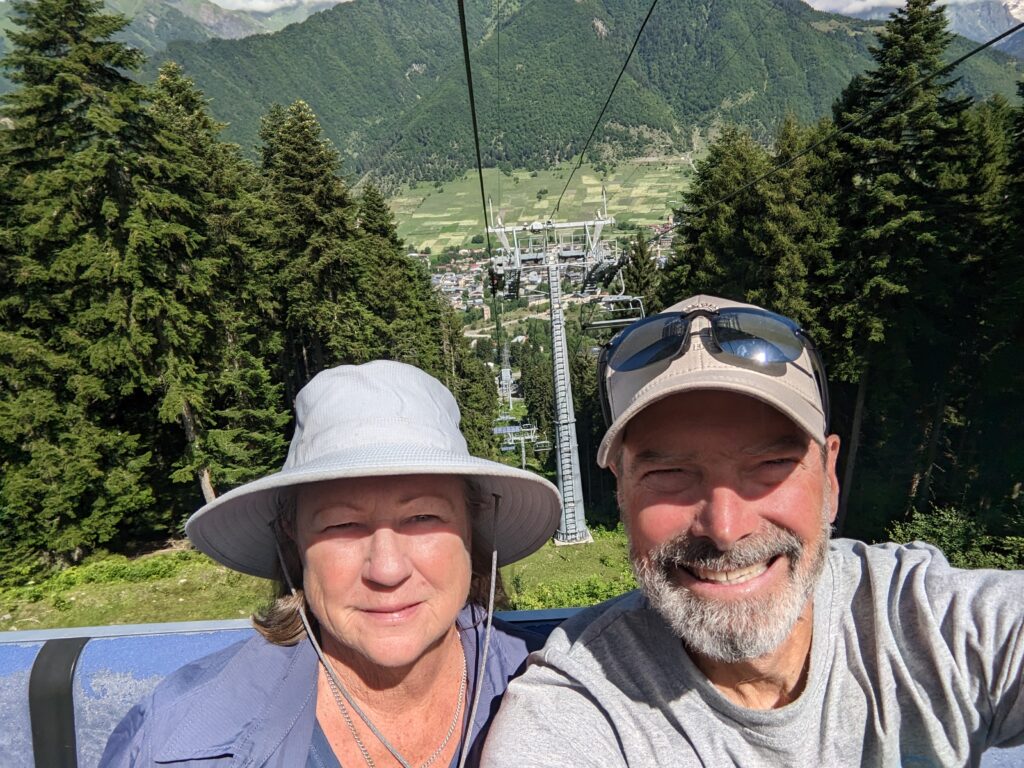
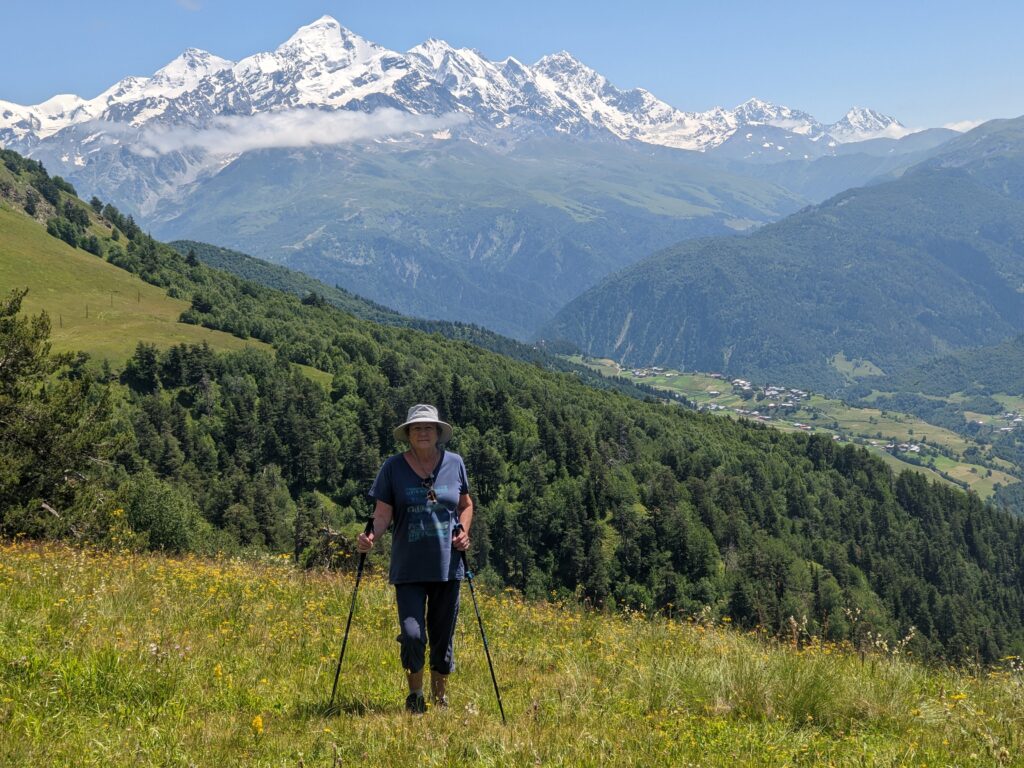
We caught our rides back down to Mestia and drove out to the start of a walk that would take us to the base of the Chalaadi Glacier. The walk started through the thick pine forests, feeling very Tahoe, and then followed the Mestiachala River, which is basically all the snow melt from the glacier, as it roared past us.
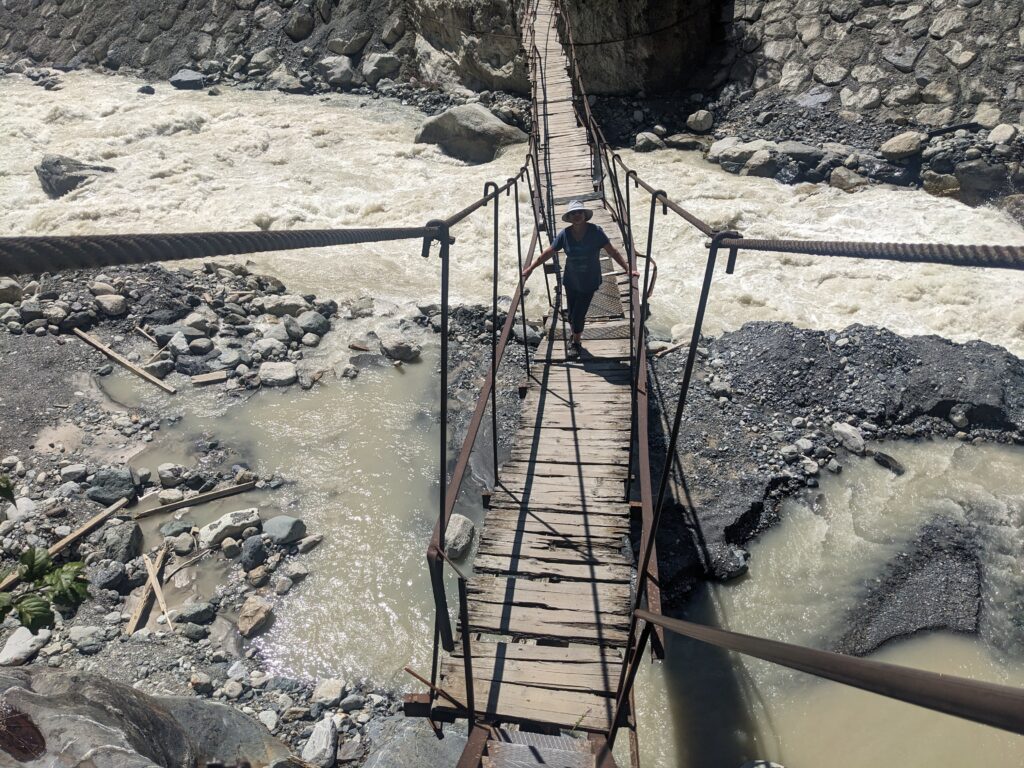
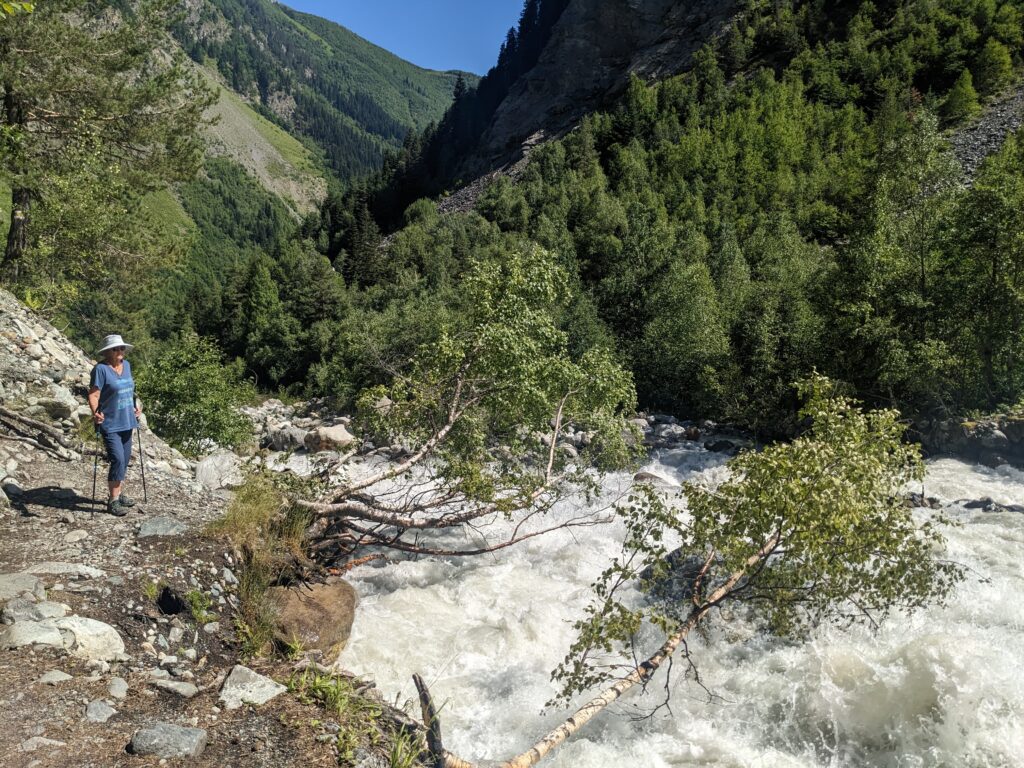
Eventually the glacier came into view, the very definition of awesome, and we walked up close to it’s base where the river flowed out from under the ice face and rocks from the moraine on top of the glacier frequently rolled down it’s face and shattered on the rocks below.
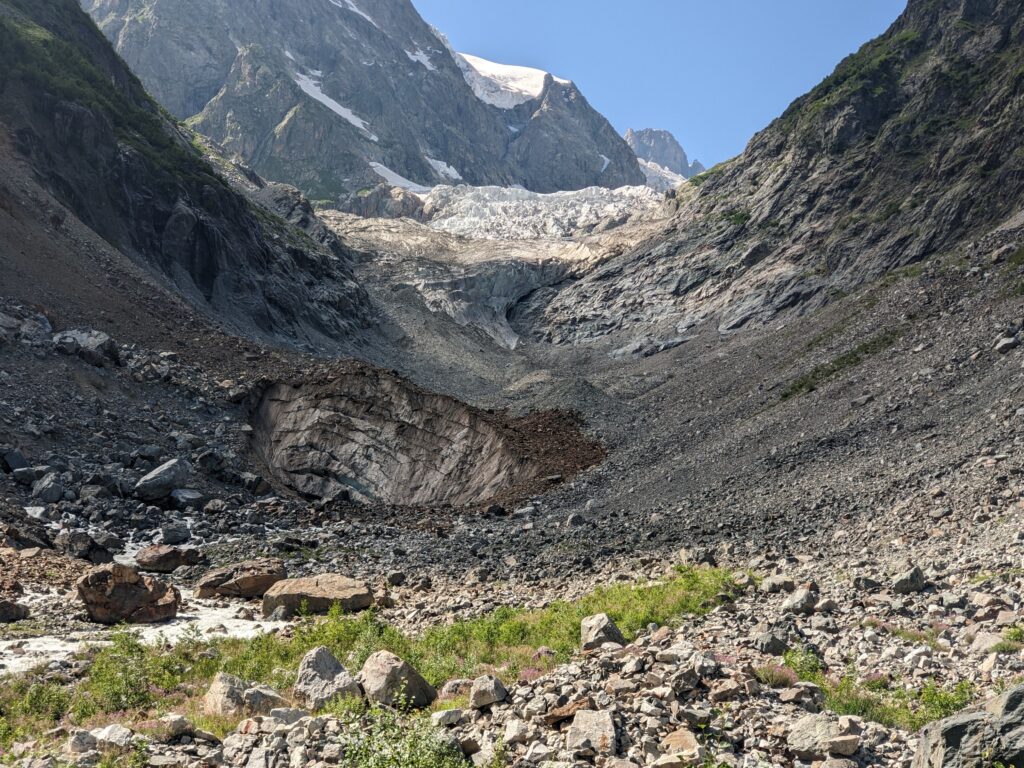
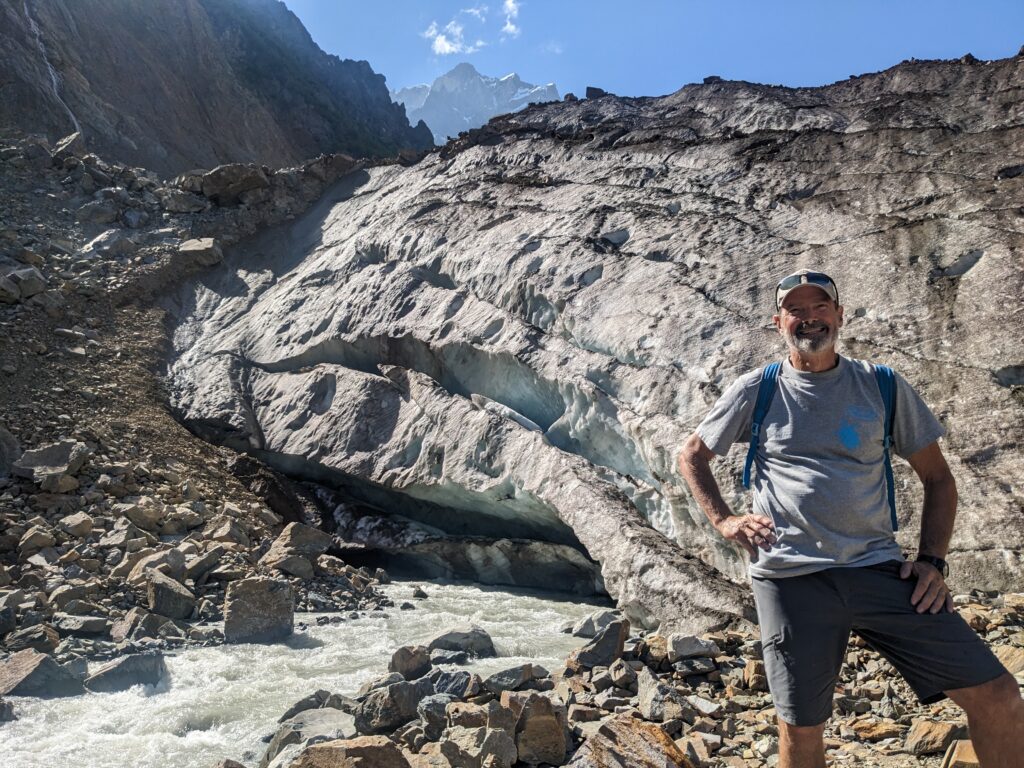
We camped that night on the banks of the Mestiachala River and loved the background noise of it’s constant roar under the stars with the three-quarter moon as we watched our fire crackle and pop all night. What a day!
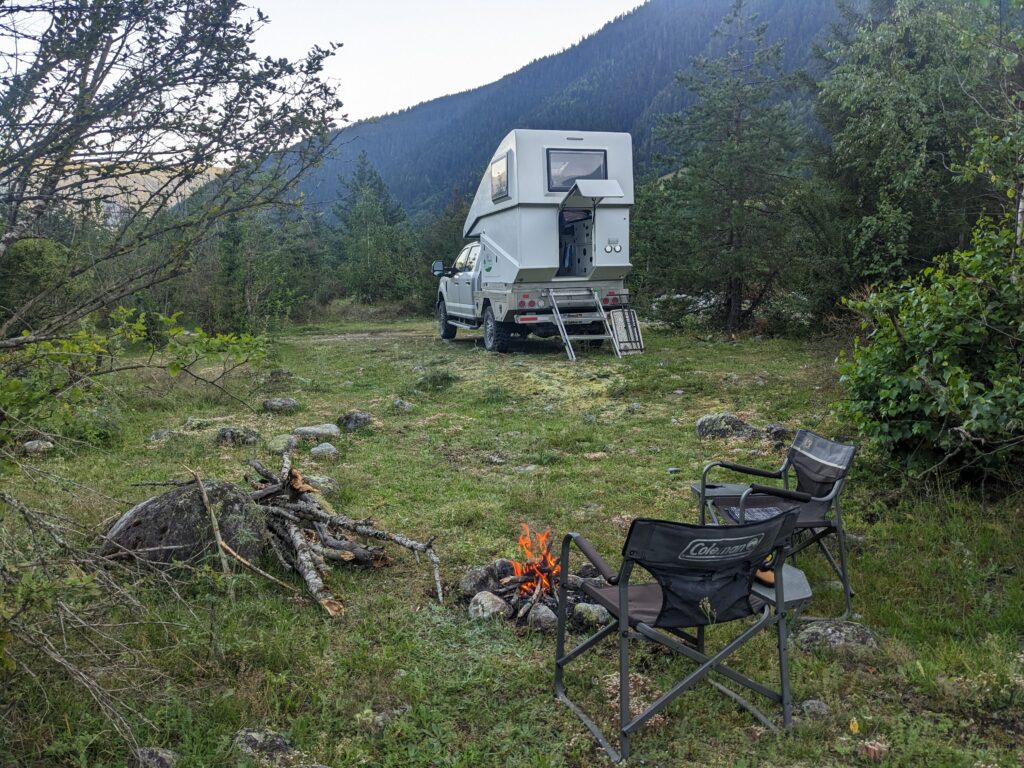
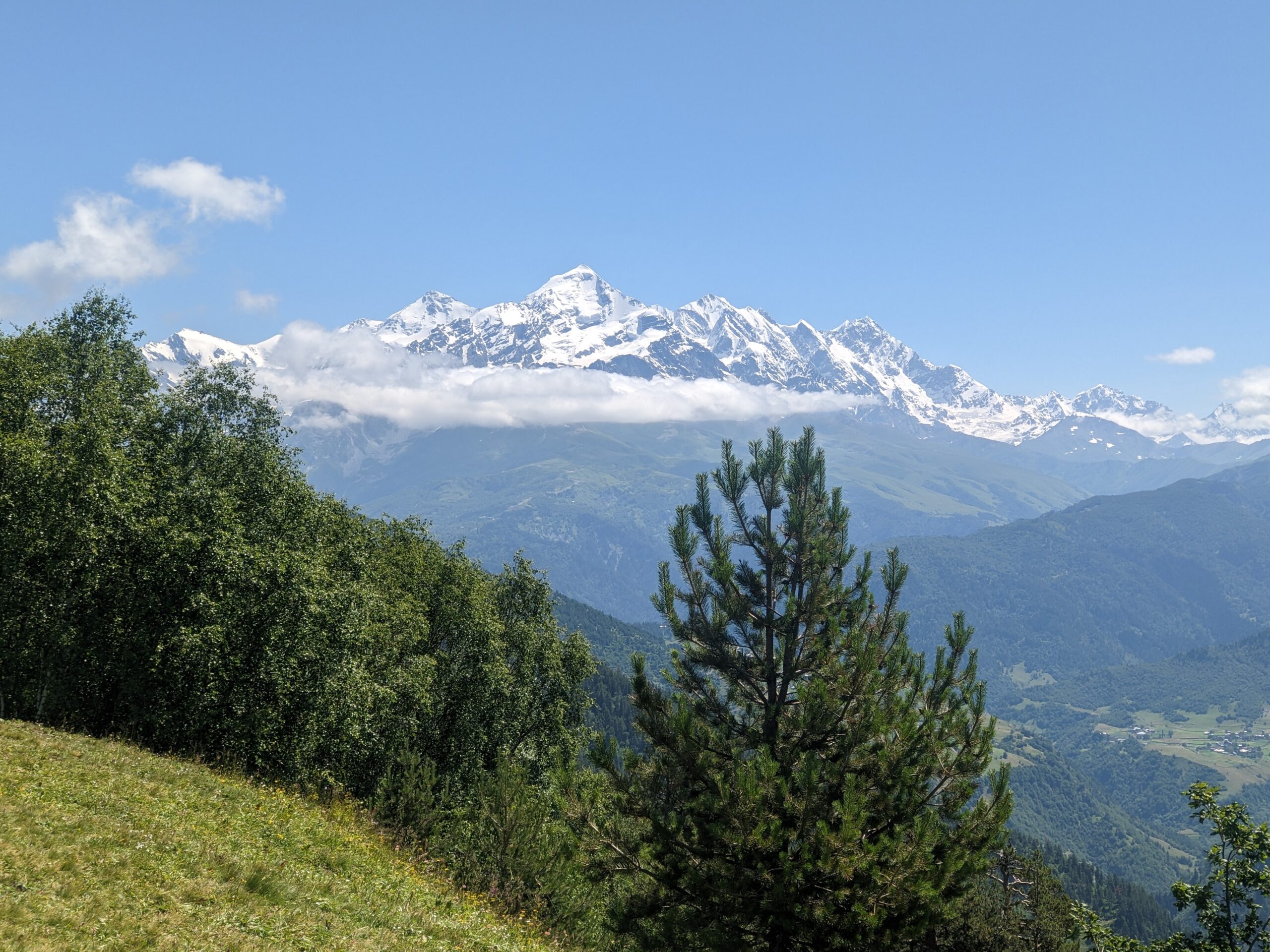
Loved the wine ice cream!!! Spectacular views of mountains and rivers- I wasn’t expecting glaciers! Looks like the weather has been pretty warm- very hot here for September.
Safe travels
Margxxx
Hi Marg, wine ice cream is now Julie’s favourite afternoon treat. Unfortunately we never saw it before that day and we’ve never seen it since.